.
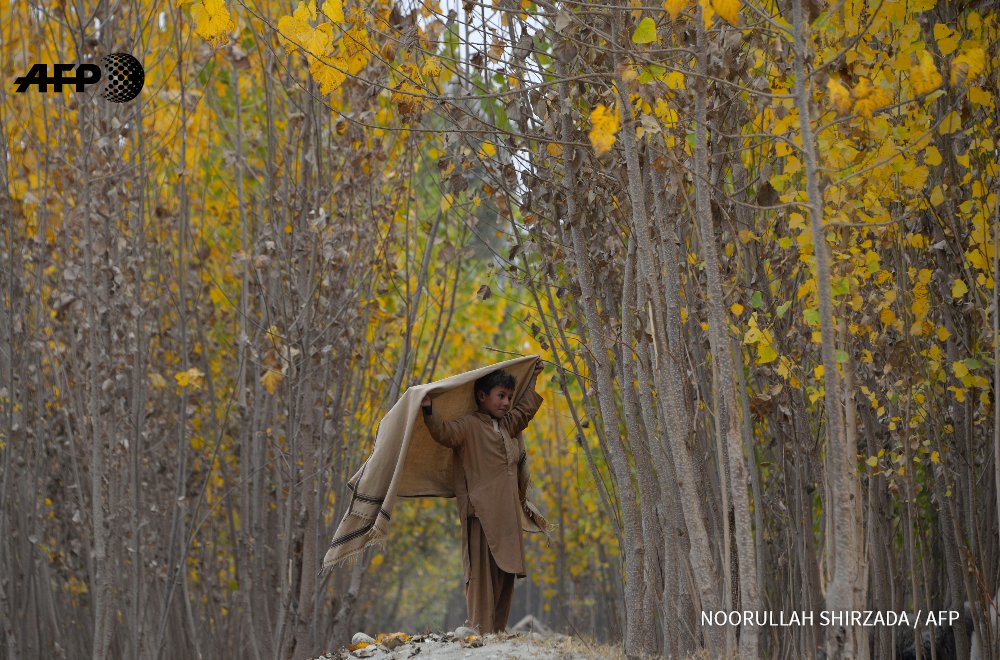
An Afghan child shepherd walks under the changing leaves of trees on the outskirts of Jalalabad. @NoorullahShir #AFP: image via shahmarai @shahmarai, 23 November 2016
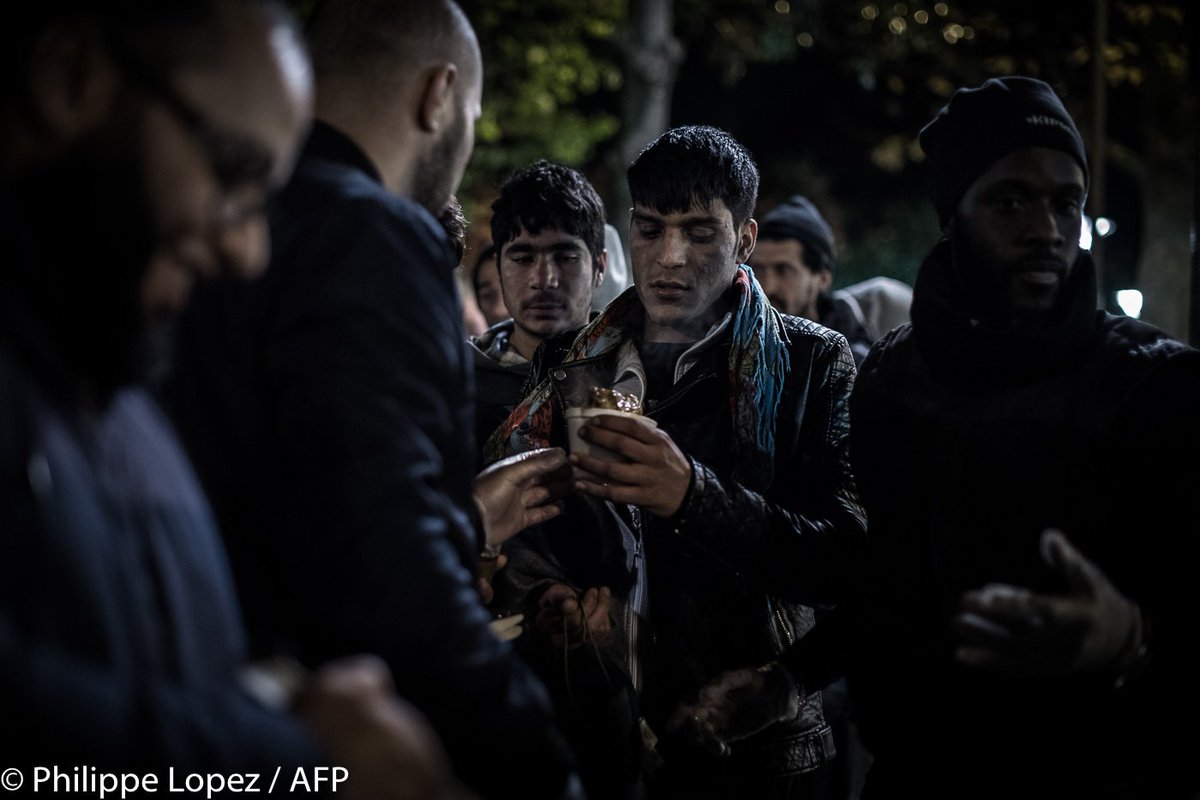
#French rail-workers from various regions created #Exclusolidaires to help the poorest and #homeless in #Paris #AFP: image via Philippe Lopez @philippe_lopez, 23 November 2016
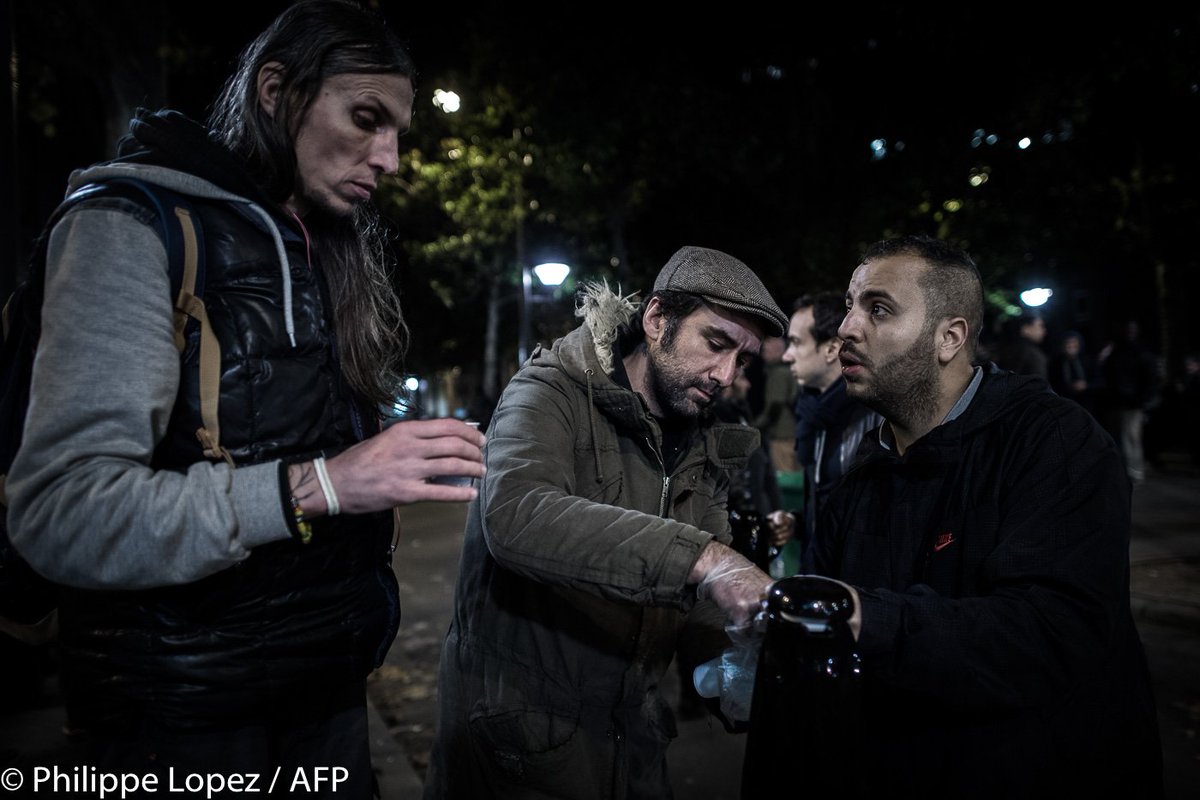
#French rail-workers from various regions created #Exclusolidaires to help the poorest and #homeless in #Paris #AFP: image via Philippe Lopez @philippe_lopez, 23 November 2016
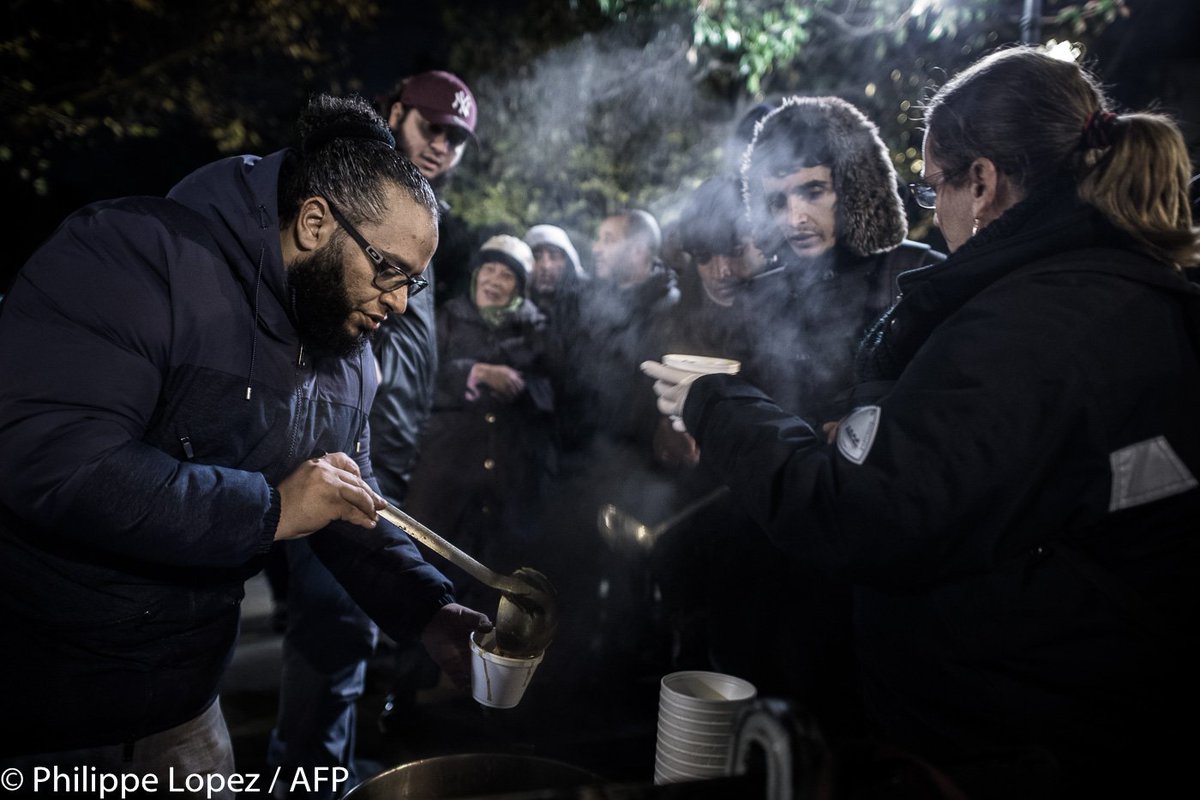
#French rail-workers from various regions created #Exclusolidaires to help the poorest and #homeless in #Paris #AFP: image via Philippe Lopez @philippe_lopez, 23 November 2016
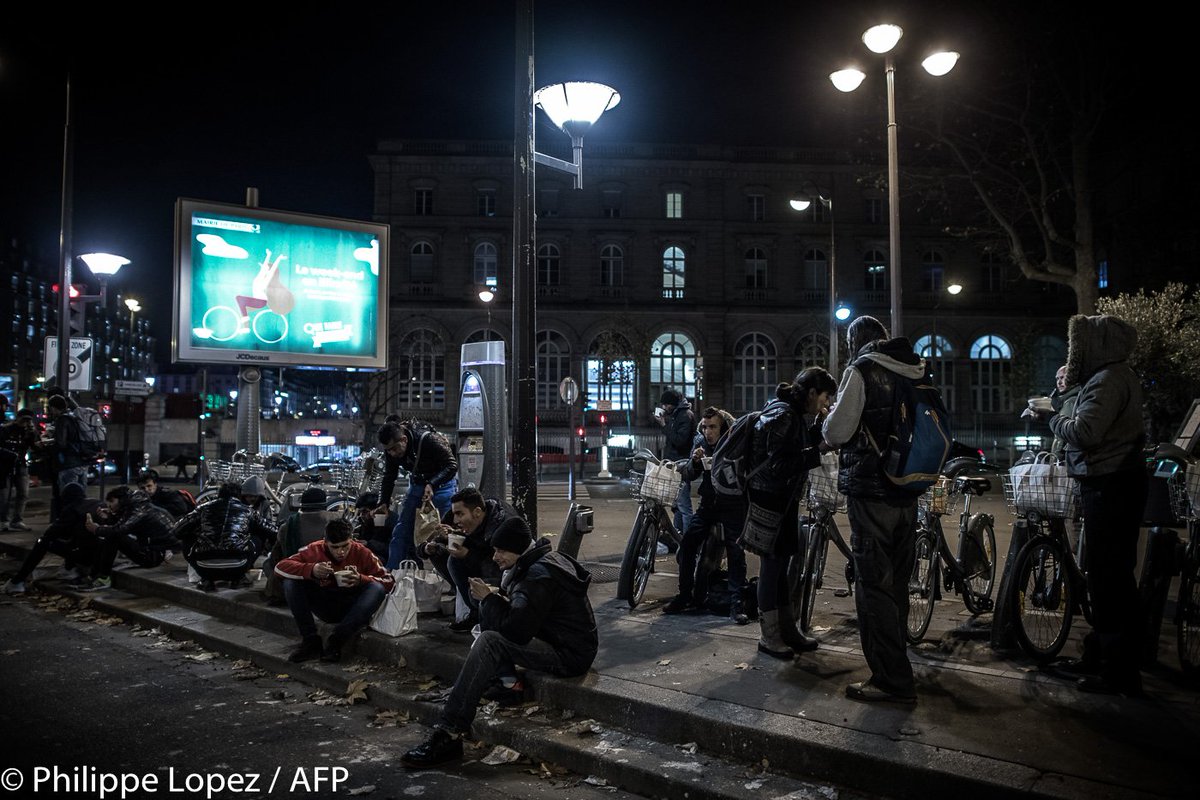
#French rail-workers from various regions created #Exclusolidaires to help the poorest and #homeless in #Paris #AFP: image via Philippe Lopez @philippe_lopez, 23 November 2016
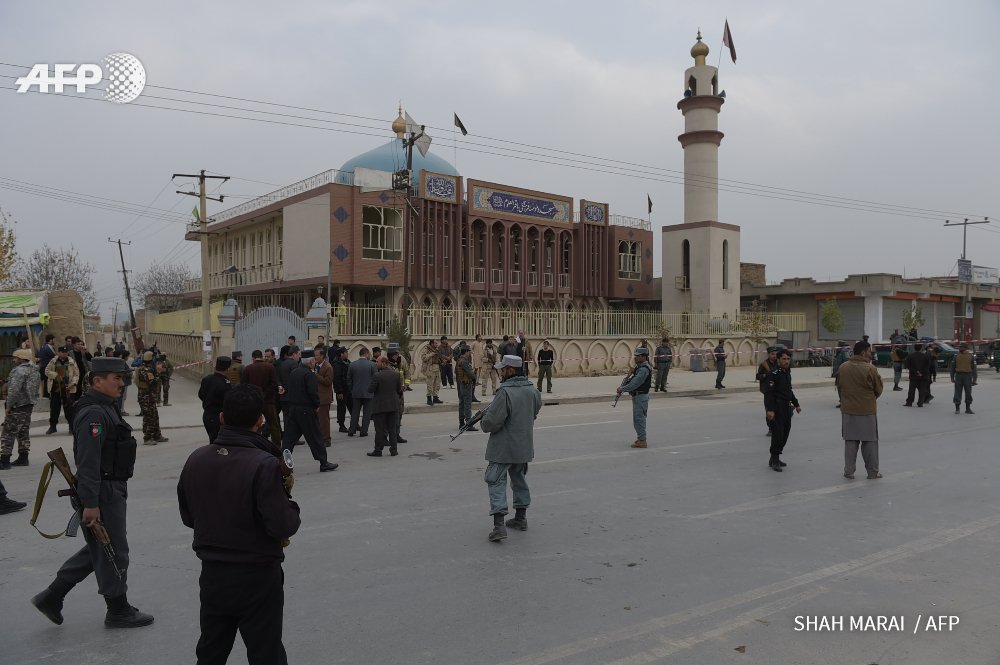
AFG: A massive suicide blast at a Shiite mosque in Kabul killed at least 27 people and wounded 35 others #AFP: image via shahmarai @shahmarai, 23 November 2016
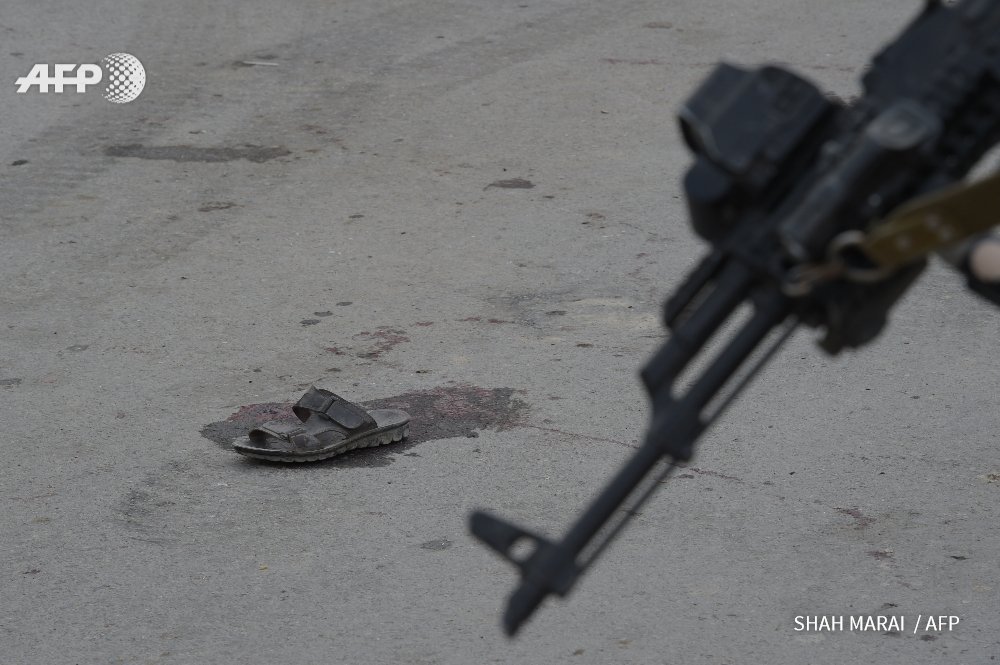
AFG: A massive suicide blast at a Shiite mosque in Kabul killed at least 27 people and wounded 35 others #AFP: image via shahmarai @shahmarai, 23 November 2016
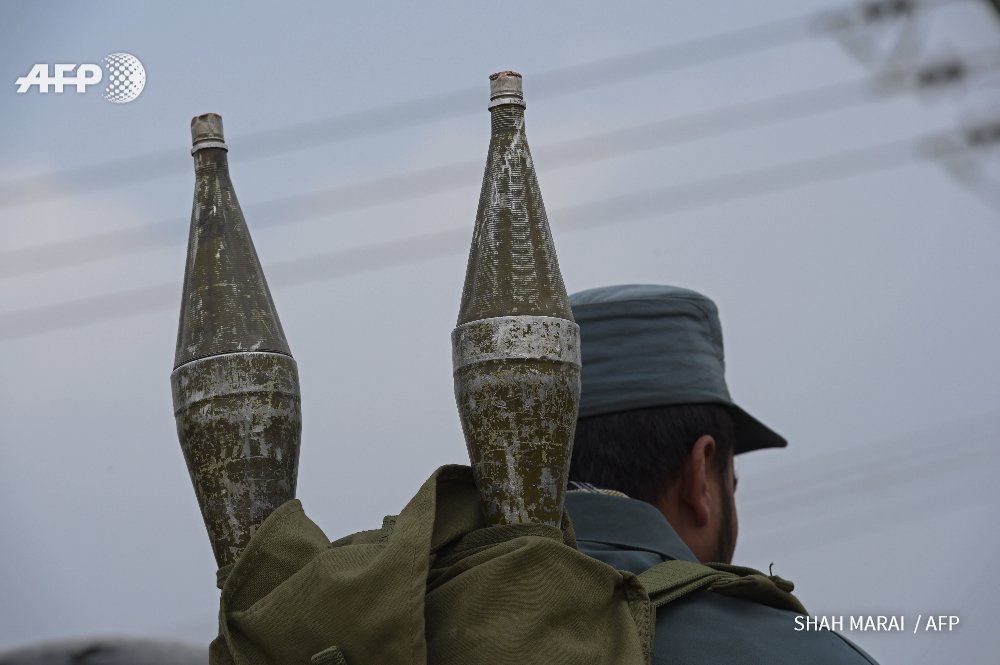
AFG: A massive suicide blast at a Shiite mosque in Kabul killed at least 27 people and wounded 35 others #AFP: image via shahmarai @shahmarai, 23 November 2016

#Afghan mourners carry the coffin of one of the 27 victims killed in a bloody mosque bombing, in #Kabul #AFP: image via shahmarai @shahmarai, 23 November 2016
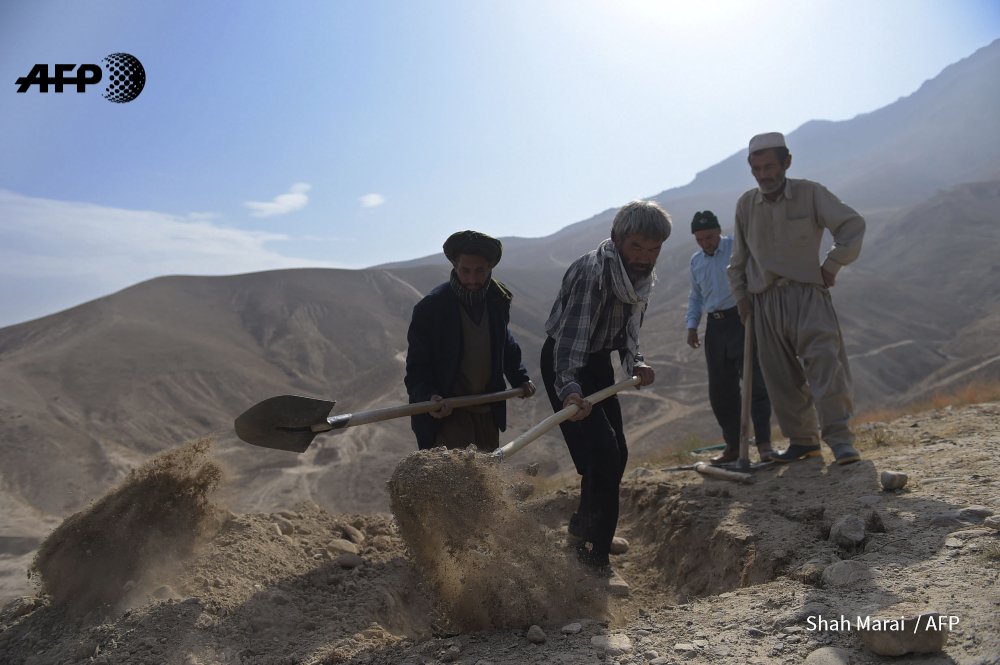
#Afghan mourners carry the coffin of one of the 27 victims killed in a bloody mosque bombing, in #Kabul #AFP: image via shahmarai @shahmarai, 23 November 2016
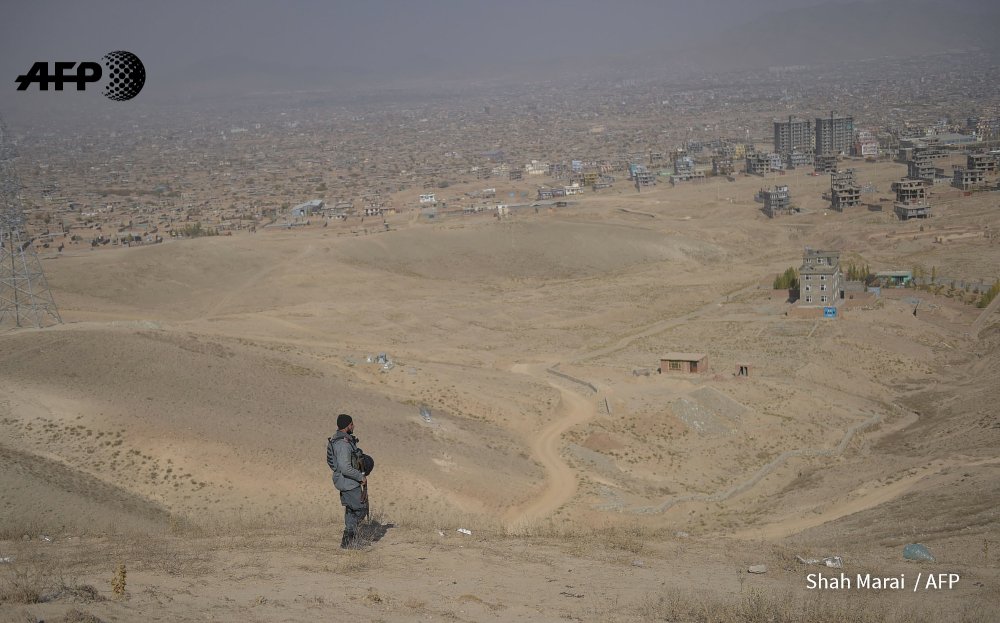
#Afghan mourners carry the coffin of one of the 27 victims killed in a bloody mosque bombing, in #Kabul #AFP: image via shahmarai @shahmarai, 23 November 2016
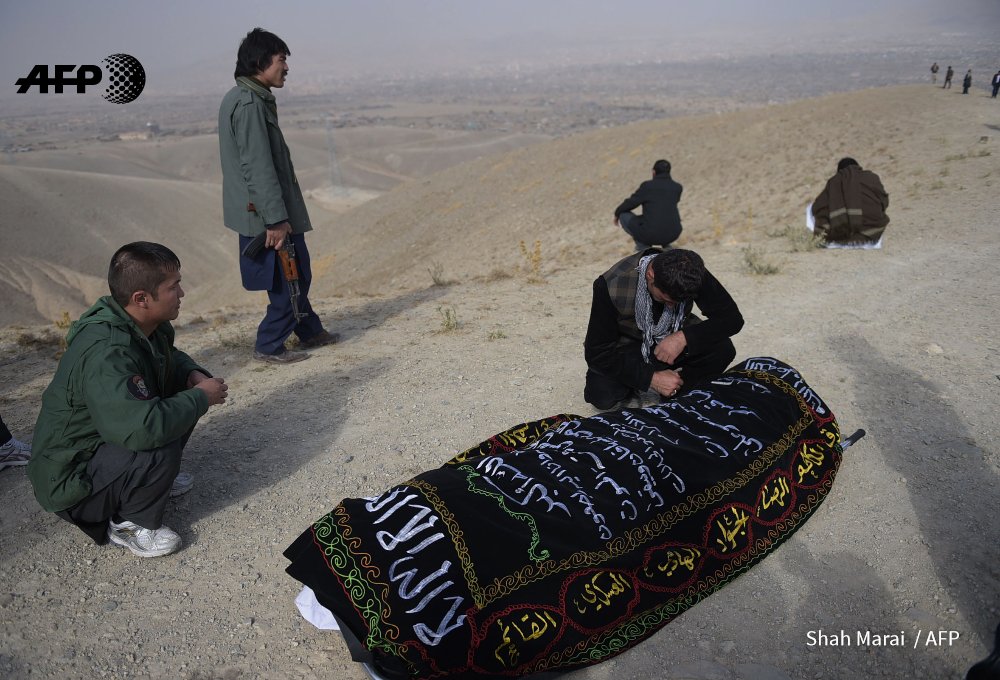
#Afghan mourners carry the coffin of one of the 27 victims killed in a bloody mosque bombing, in #Kabul #AFP: image via shahmarai @shahmarai, 23 November 2016

AFGHANISTAN - A relative weeps next to the coffin of one of the 27 victims killed in a bloody mosque bombing in Kabul. By@shahmarai #AFP: image via Frédérique Geffard @fgeffardAFP, 23 November 2016
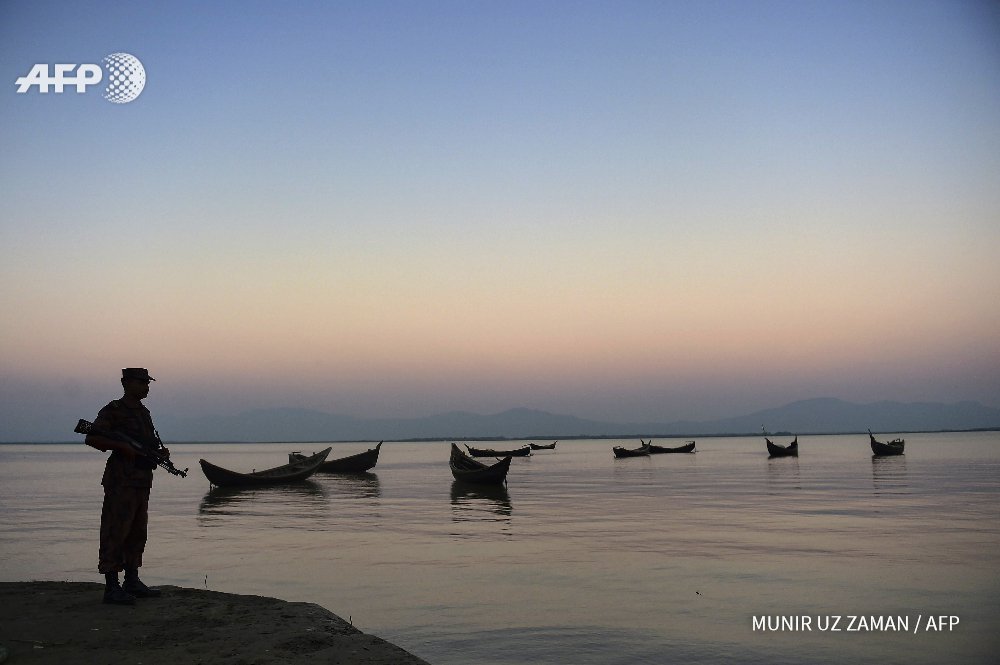
BANGLADESH - Border Guard Bangladesh personel stand watch for the illegal entry of Myanmar Rohingya refugees near Teknaf. By Muir Uz Zaman: image via Frédérique Geffard @fgeffardAFP, 23 November 2016
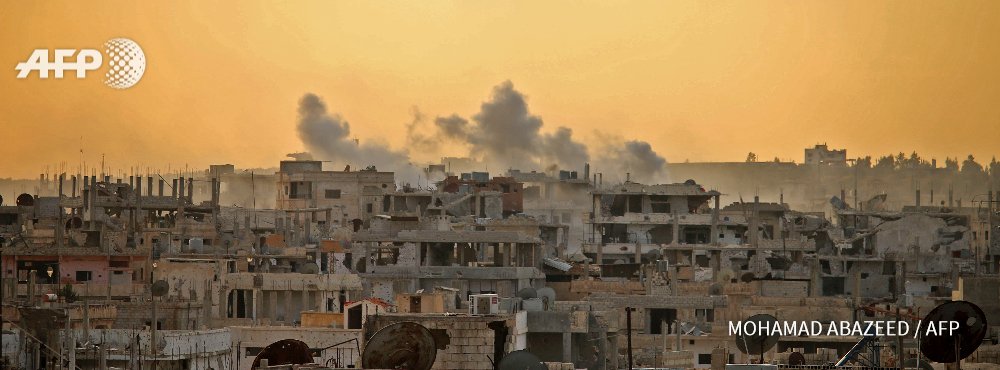
SYRIA - Smoke billows following a reported air strike by Syrian government forces in a rebel-held area of Daraa. By @AbazidMohamad #AFP: image via Frédérique Geffard @fgeffardAFP, 23 November 2016
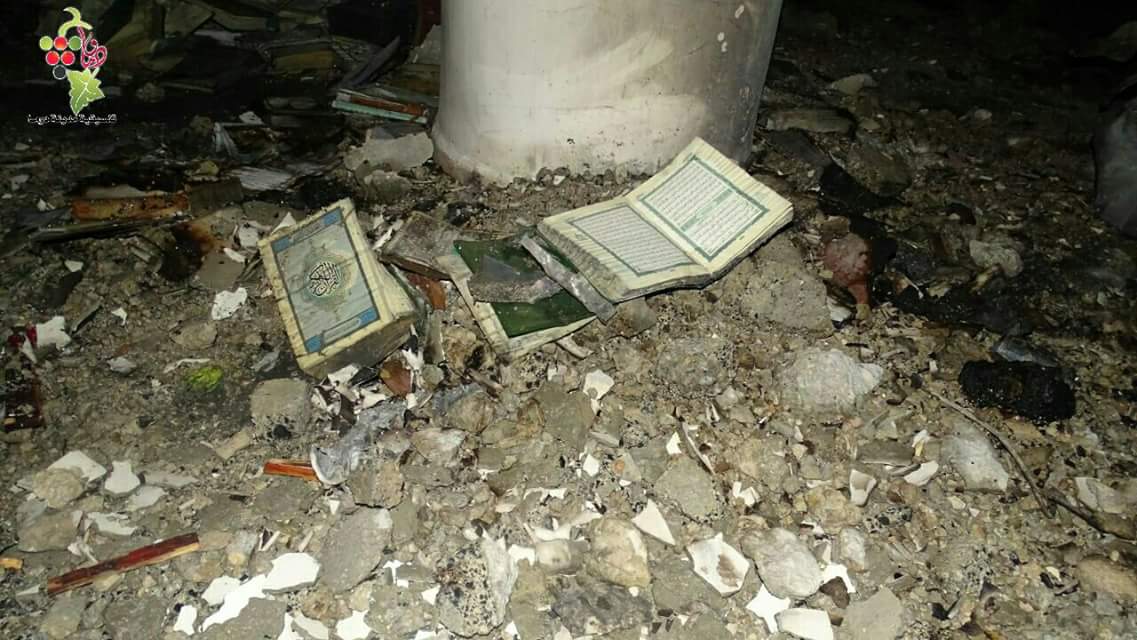
The destruction of a mosque night air raids launched by warplanes #Medinh_almazn #Damascus Countryside syria: image via Amer Almohibany @ameralmohibany, 23 November 2016
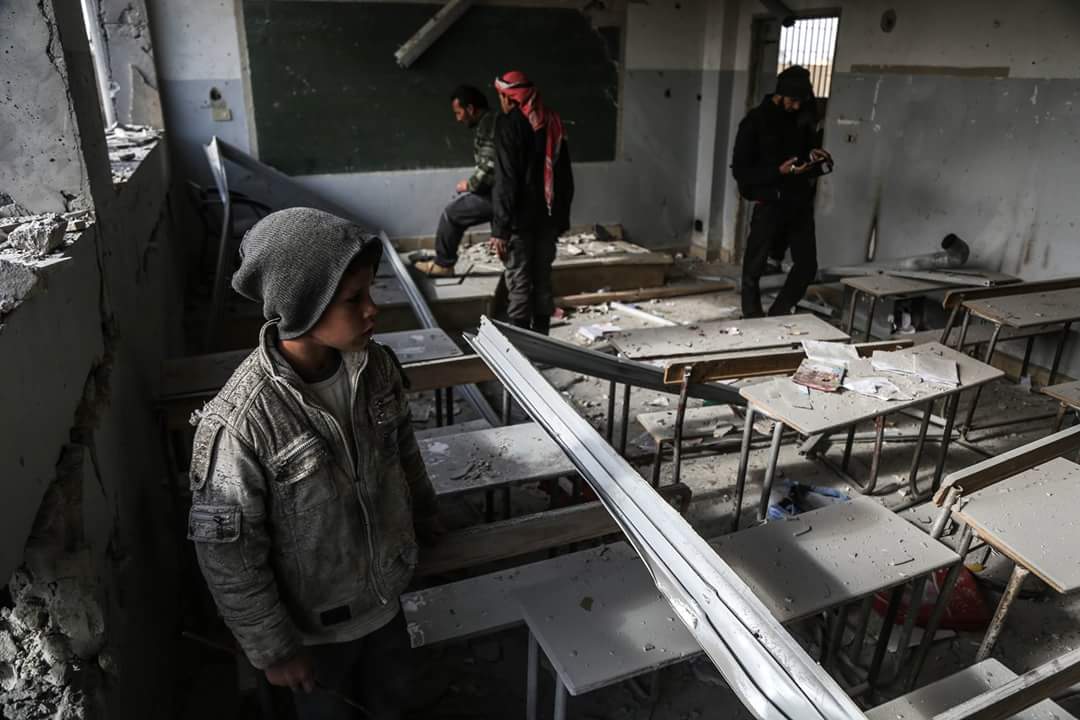
I kid from #Eastern_Ghouta bombed my school and I am today without a school
i am still dreaming #Syrianconflict: image via Amer Almohibany @ameralmohibany, 23 November 2016

#Syria This destruction and rubble left by aerial bombardment on a school for children in the #eastern_Ghouta: image via Amer Almohibany @ameralmohibany, 20 November 2016

#Syria This destruction and rubble left by aerial bombardment on a school for children in the #eastern_Ghouta: image via Amer Almohibany @ameralmohibany, 20 November 2016
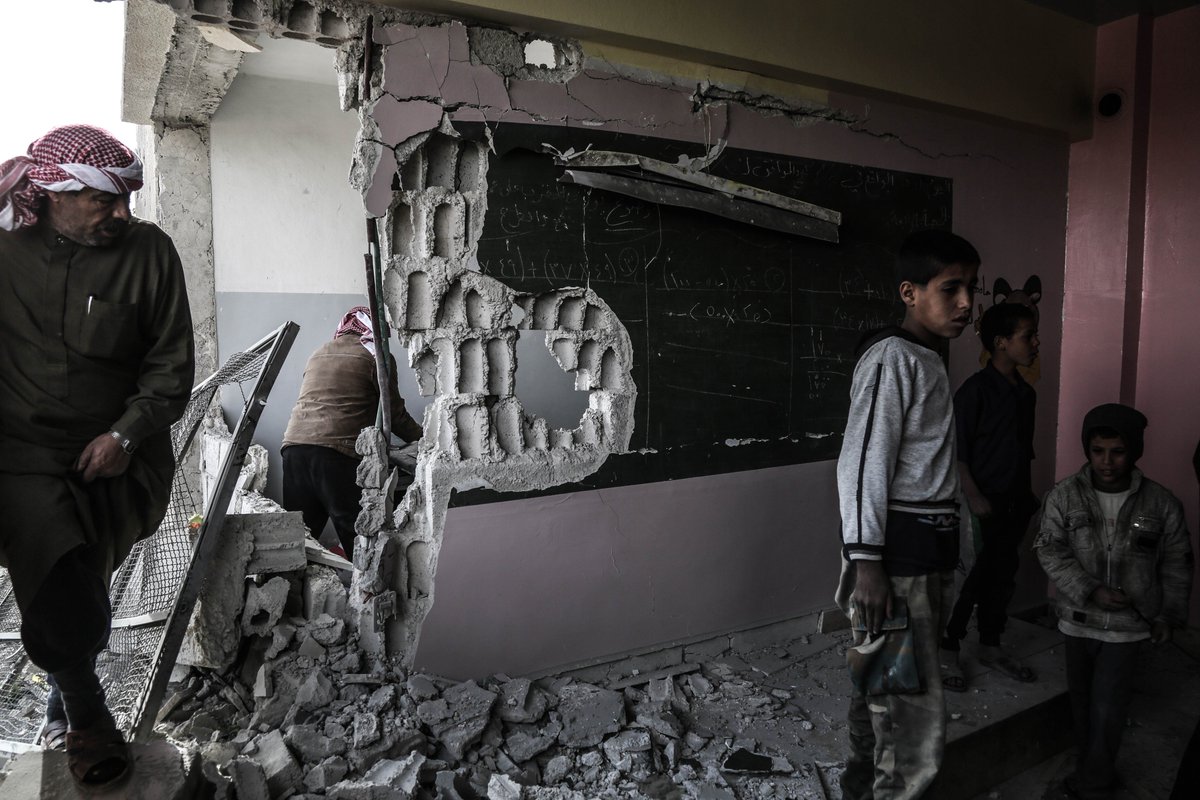
#Syria This destruction and rubble left by aerial bombardment on a school for children in the #eastern_Ghouta: image via Amer Almohibany @ameralmohibany, 20 November 2016
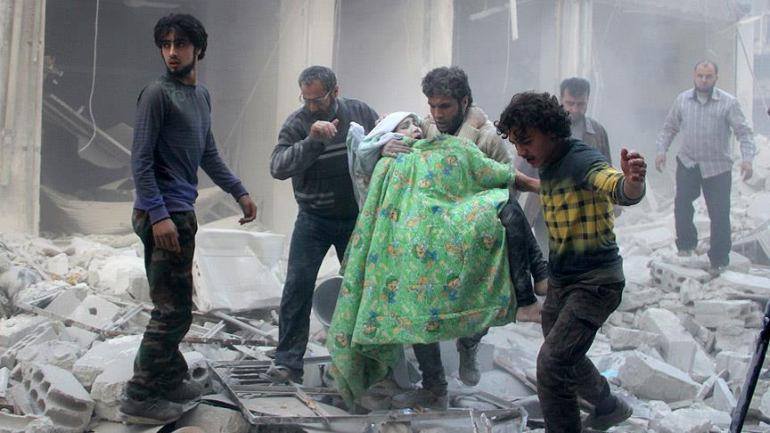
38 sunnites ont été exterminés hier dans les bombardements chrétieno-alaouite sur la province d'#Alep: image via Syrian Reporter @ReporterSyrian, 22 November 2016
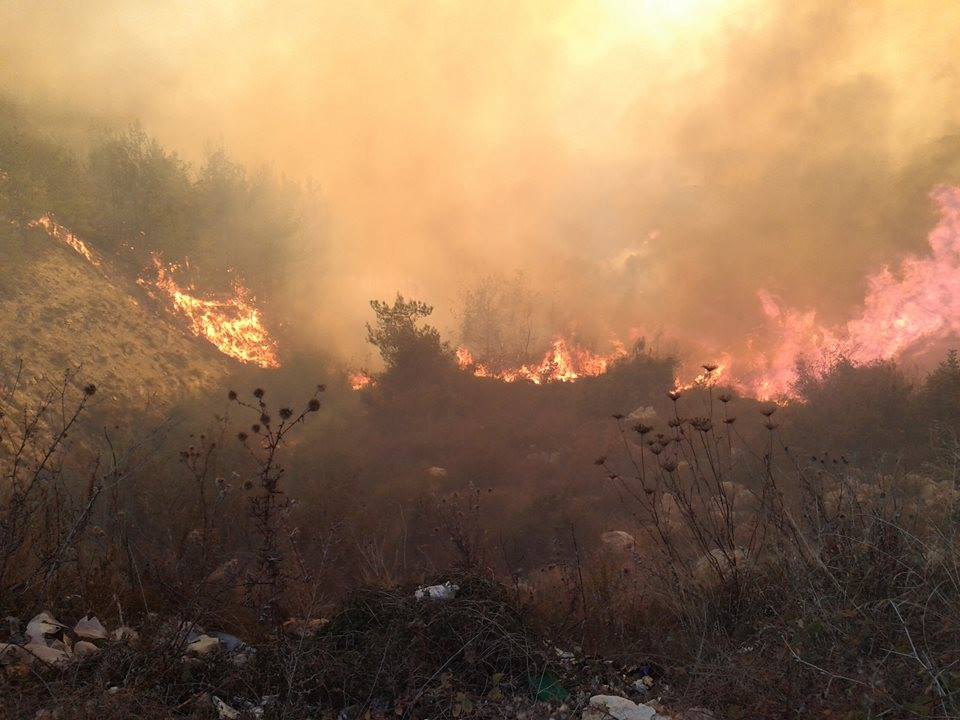
En Syrie chrétieno-alaouites il y a + de 600 avions 400 hélicoptères pour exterminer les sunnites et pas un canadair pour combattre un feu: image via Syrian Reporter @ReporterSyrian, 22 November 2016
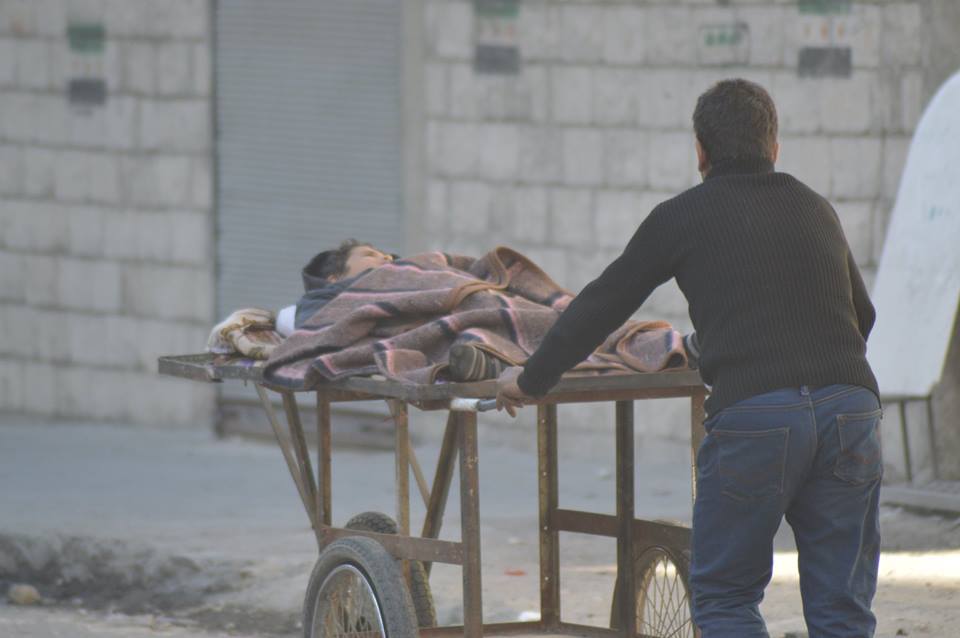
#Alep 13 sunnites ont été intoxiqués lors d'une razzia au gaz de chlore perpétrée par l'aviation chrétieno-alaouite #SainteRatonnade: image via Syrian Reporter @ReporterSyrian, 23 November 2016
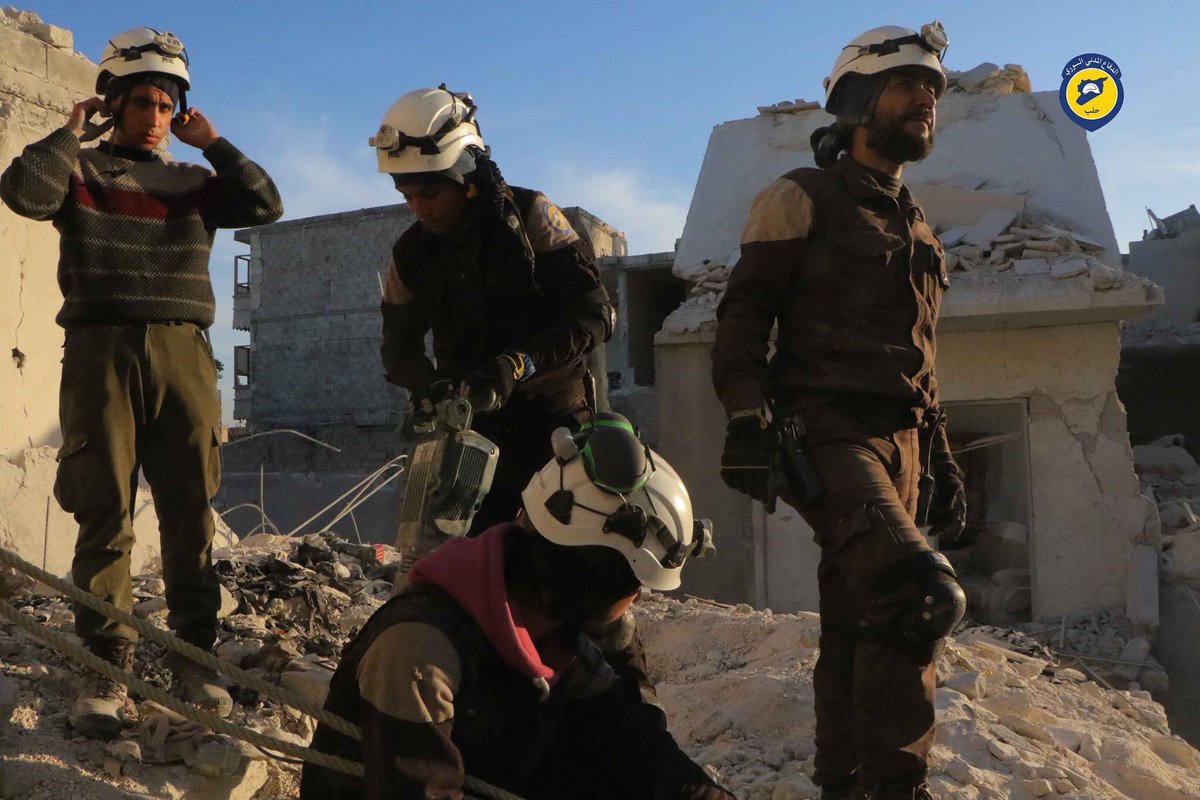
21 civilians were killed in besieged #Aleppo city yesterday, including a family of 5 in Al Myassar and many were injured: image via The White Helmets @SyriaCivilDef, 22 November 2016
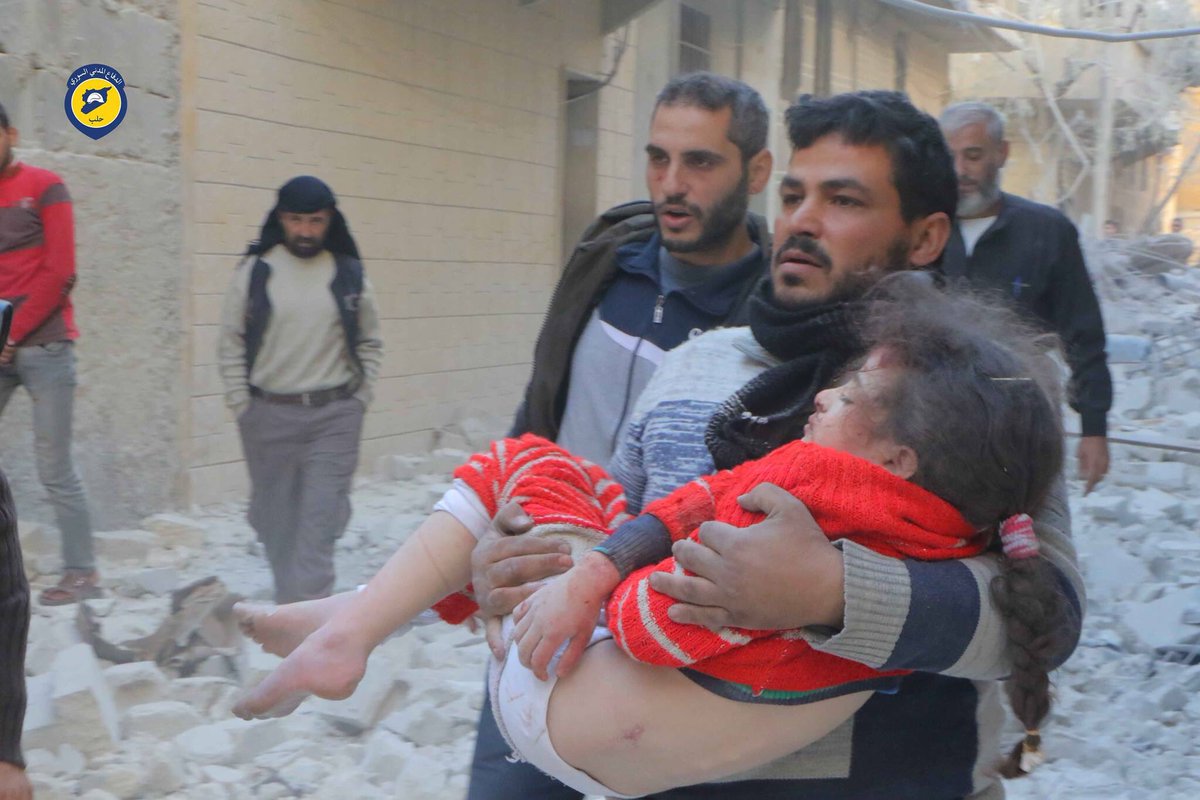
21 civilians were killed in besieged #Aleppo city yesterday, including a family of 5 in Al Myassar and many were injured: image via The White Helmets @SyriaCivilDef, 22 November 2016
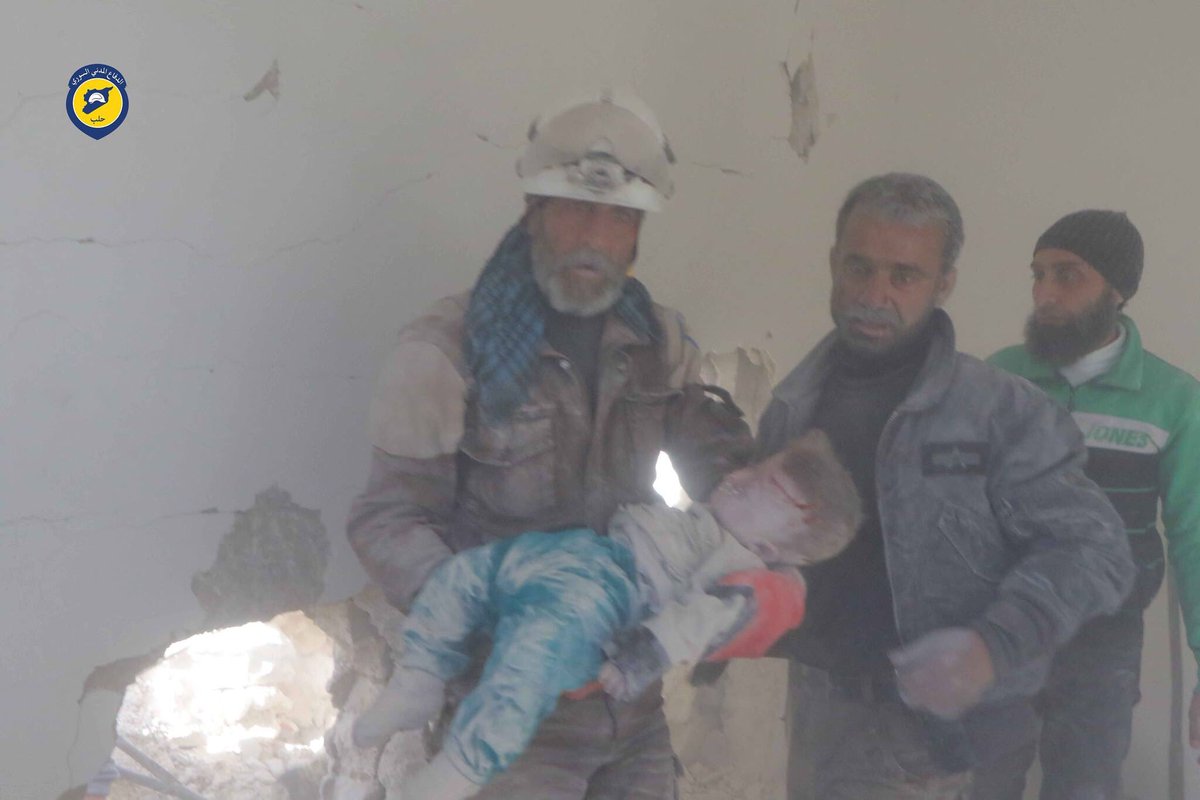
21 civilians were killed in besieged #Aleppo city yesterday, including a family of 5 in Al Myassar and many were injured: image via The White Helmets @SyriaCivilDef, 22 November 2016
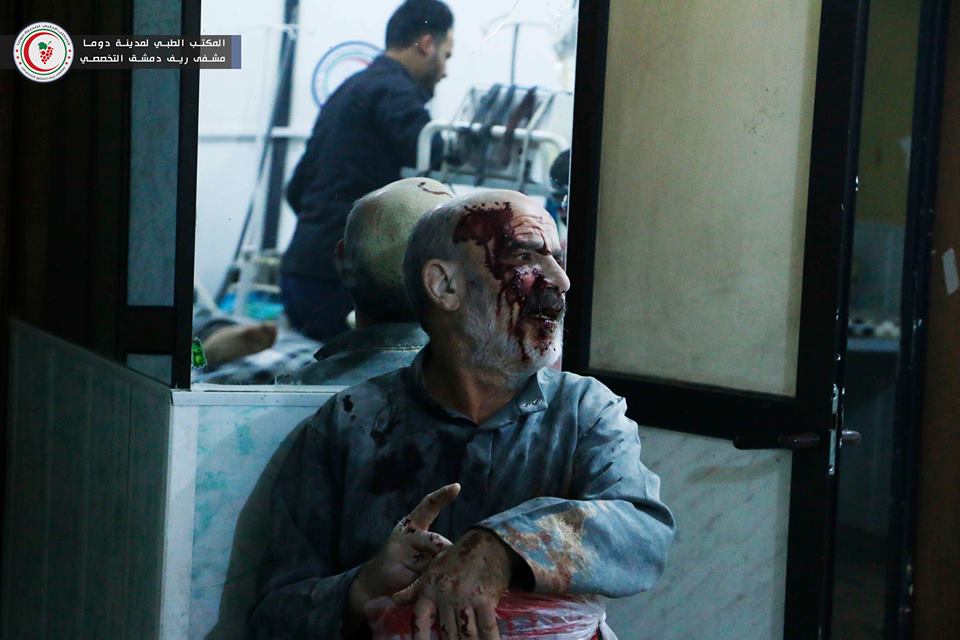
En 48h 26 sunnites ont été exterminés & 119 blessés par les bombardements chrétieno-alaouite sur les banlieues #Damas #Eastern_Ghouta #douma: image via Syrian Reporter @ReporterSyrian, 22 November 2016
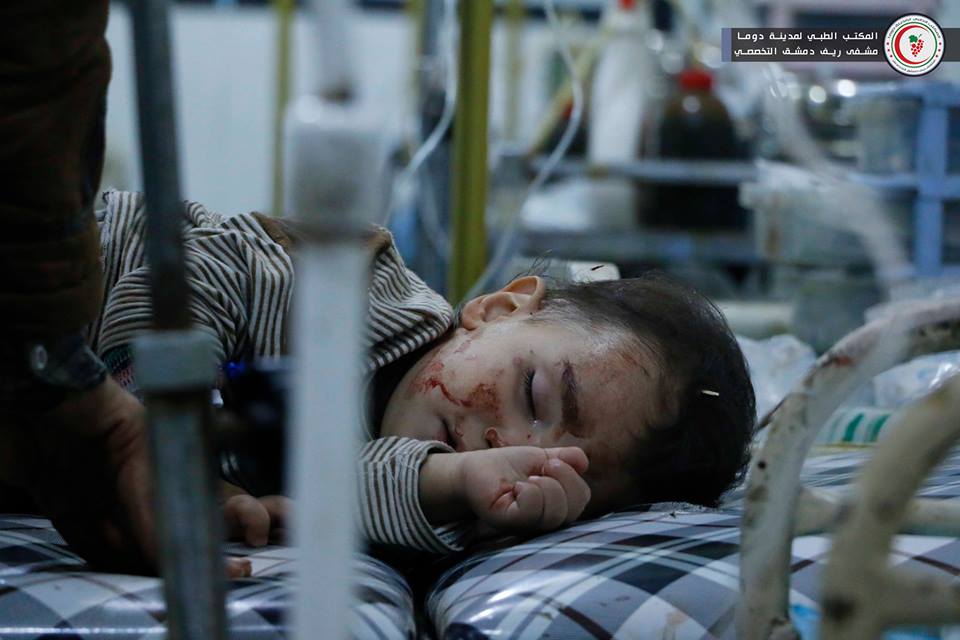
En 48h 26 sunnites ont été exterminés & 119 blessés par les bombardements chrétieno-alaouite sur les banlieues #Damas #Eastern_Ghouta #douma: image via Syrian Reporter @ReporterSyrian, 22 November 2016
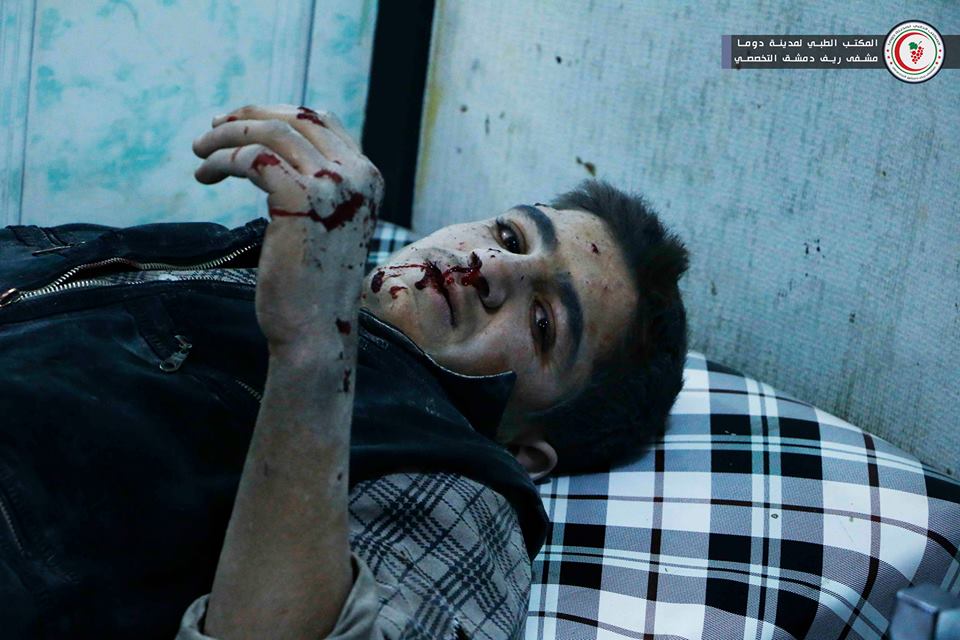
En 48h 26 sunnites ont été exterminés & 119 blessés par les bombardements chrétieno-alaouite sur les banlieues #Damas #Eastern_Ghouta #douma: image via Syrian Reporter @ReporterSyrian, 22 November 2016
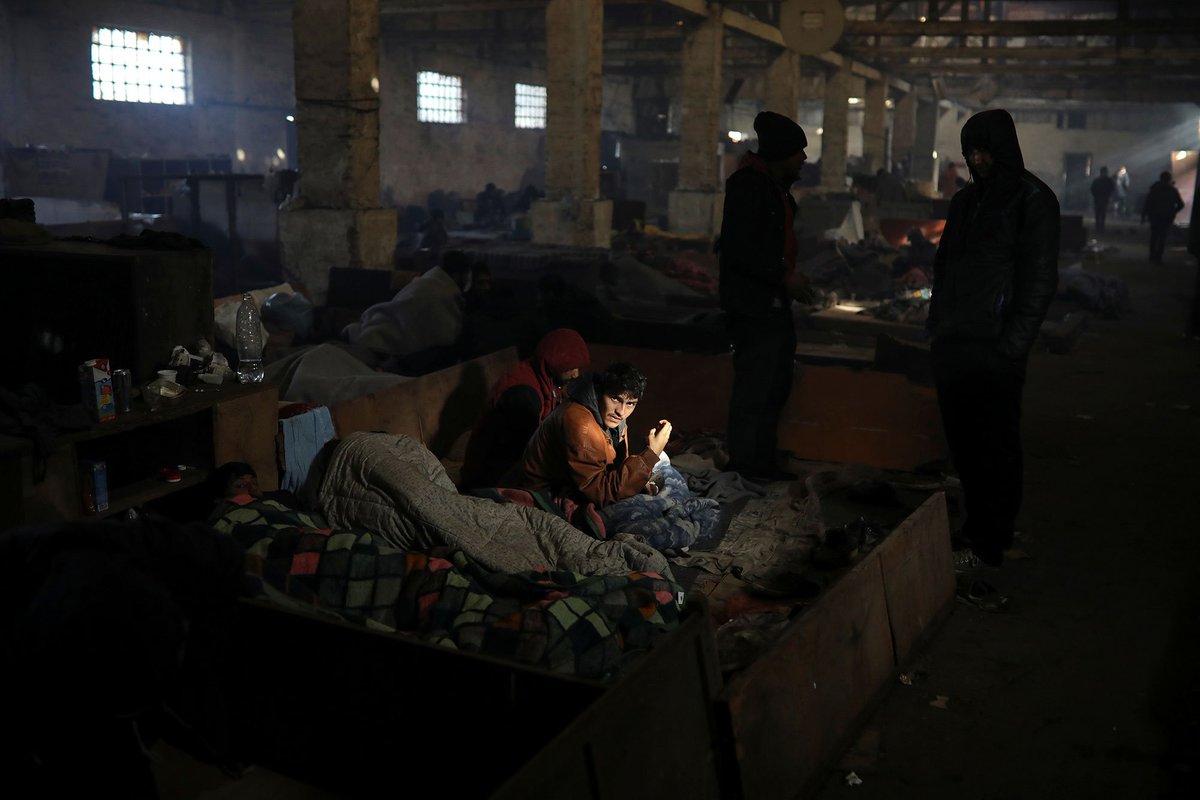
#Migrants Trapped in #Serbia | pic @markodjurica / @reuterspictures: image via Yahoo News @yahoophoto, 21 November 2016
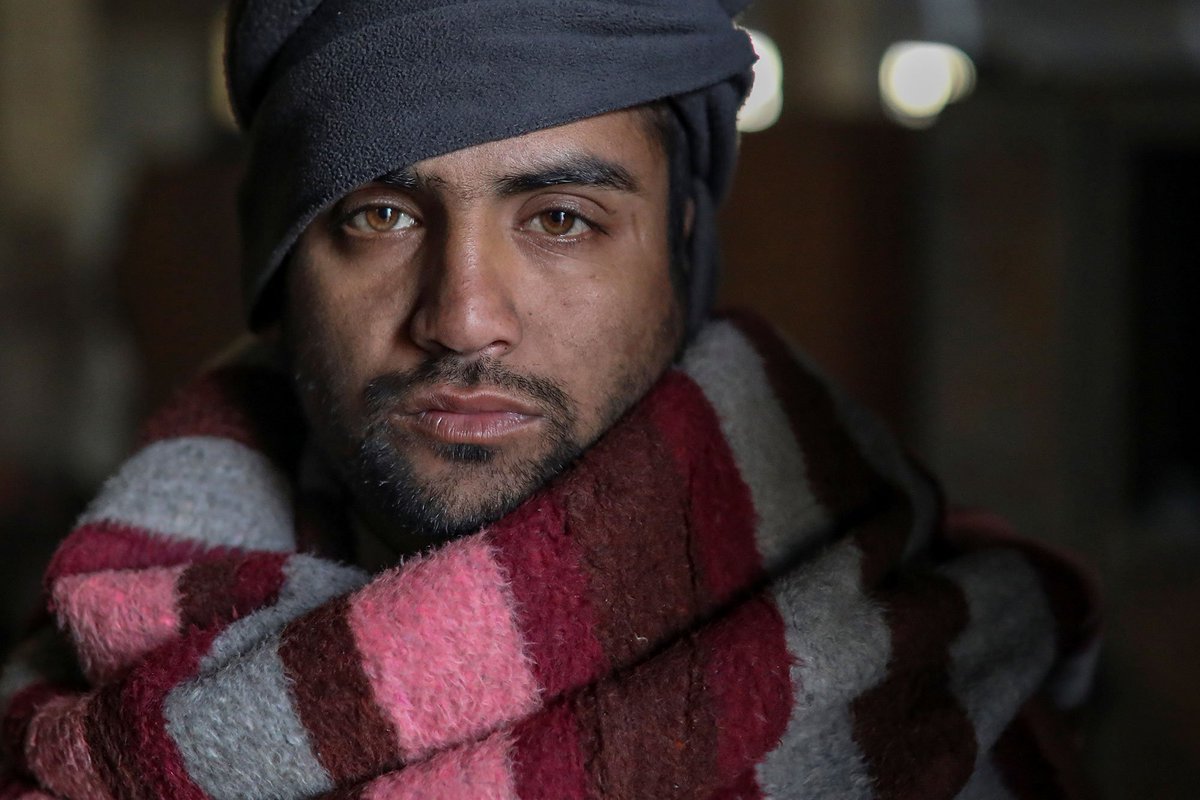
#Migrants Trapped in #Serbia | pic @markodjurica / @reuterspictures: image via Yahoo News @yahoophoto, 21 November 2016
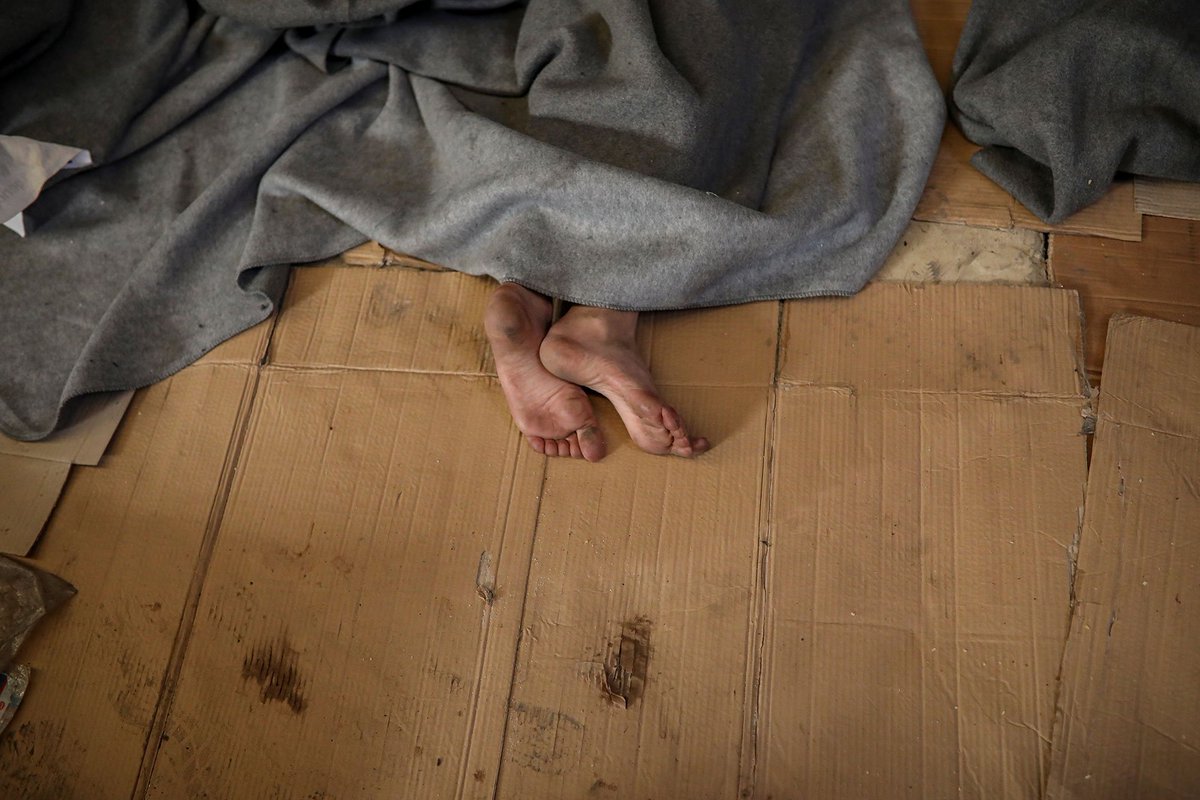
#Migrants Trapped in #Serbia | pic @markodjurica / @reuterspictures: image via Yahoo News @yahoophoto, 21 November 2016

Trapped in Serbia, migrants shelter in warehouse by REUTERS / @markodjurica: image via Reuters Paris Pix@Reuters Paris Pix, 21 November 2016
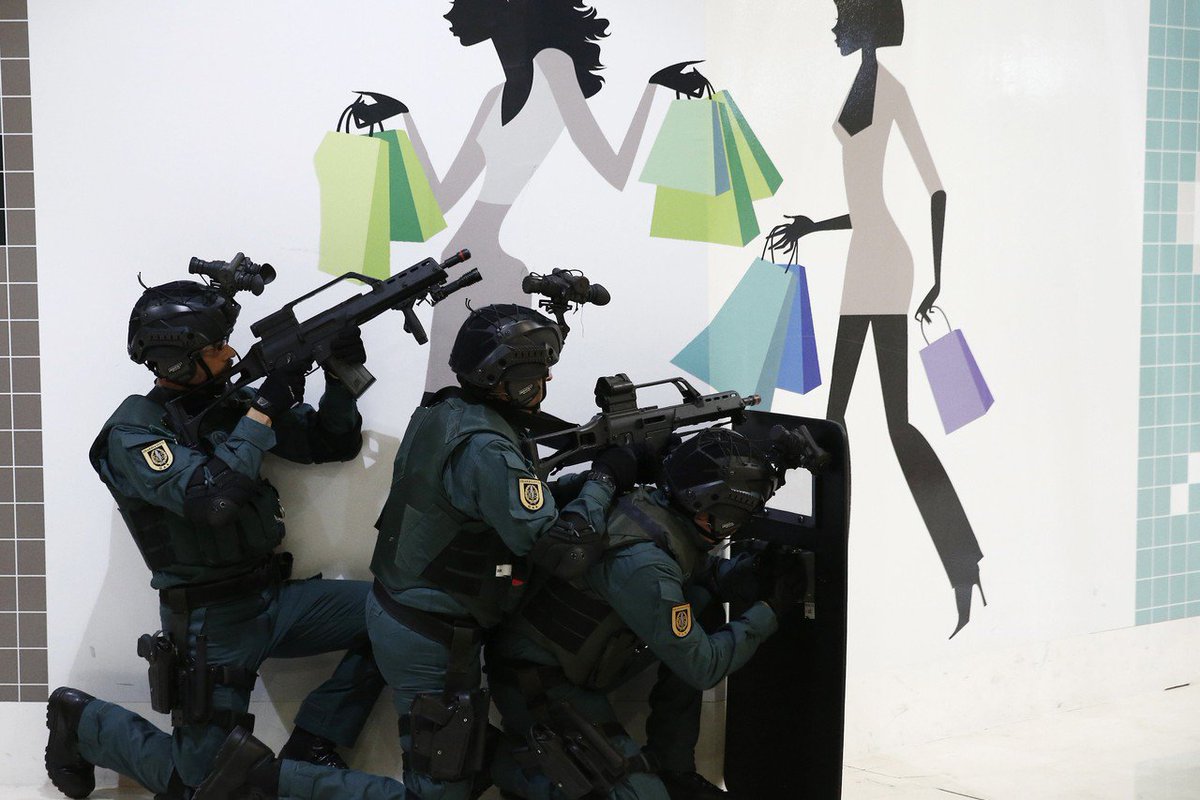
Members of the Spanish Guardia Civil participate in an antiterror drill at a mall in Pamplona
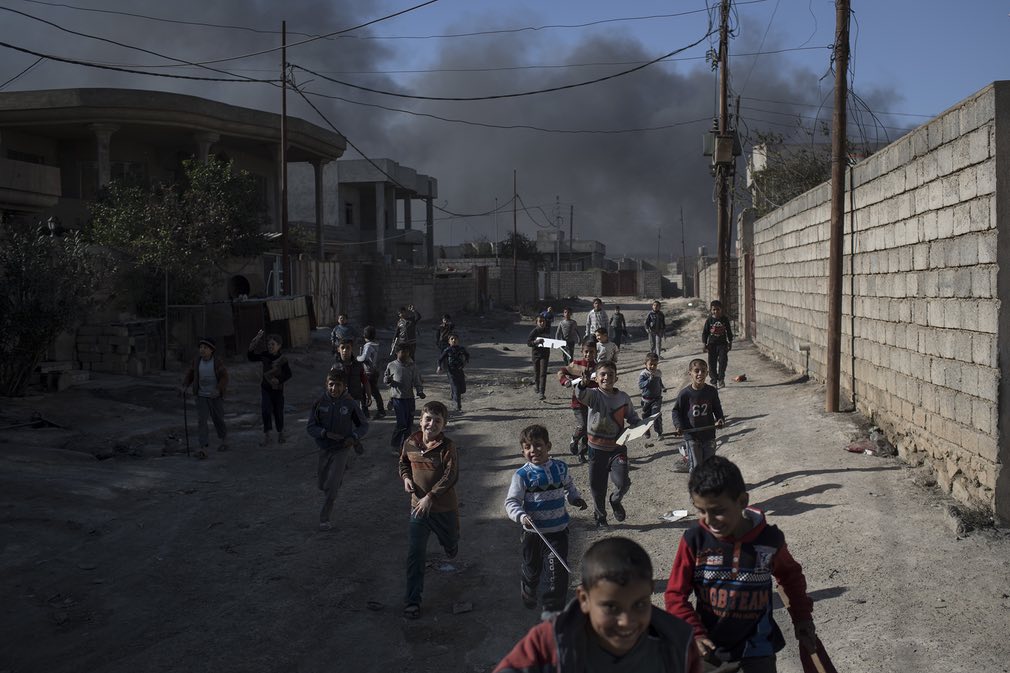
Inside #Qayara, south of #Mosul - More striking photos by @felipedana: image via Joe English @JoeEEnglish, 23 November 2016
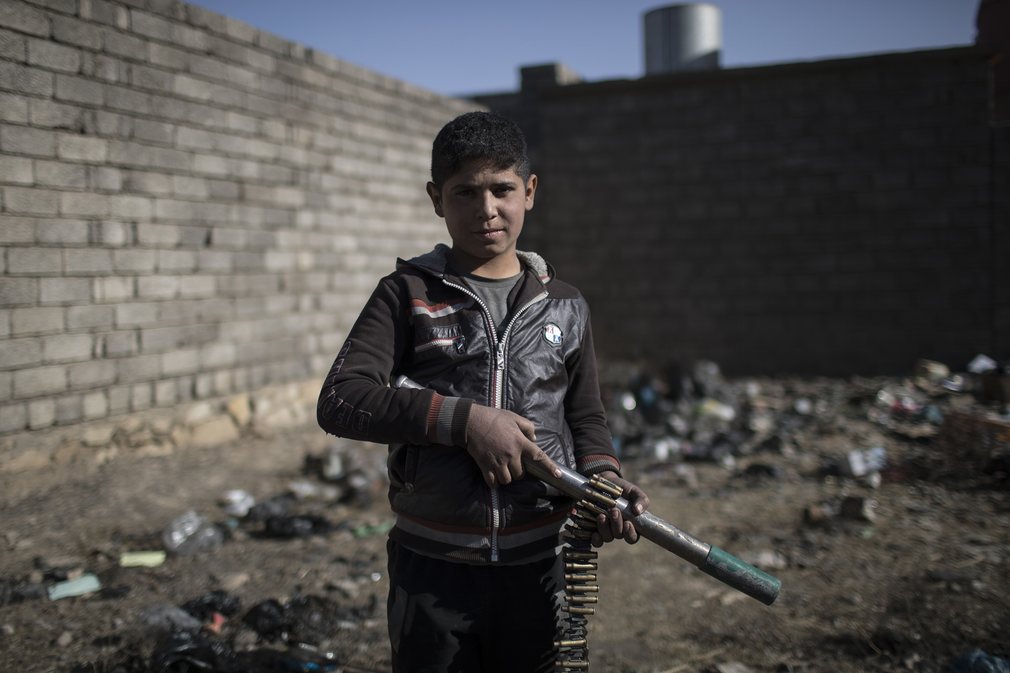
Inside #Qayara, south of #Mosul - More striking photos by @felipedana: image via Joe English @JoeEEnglish, 23 November 2016
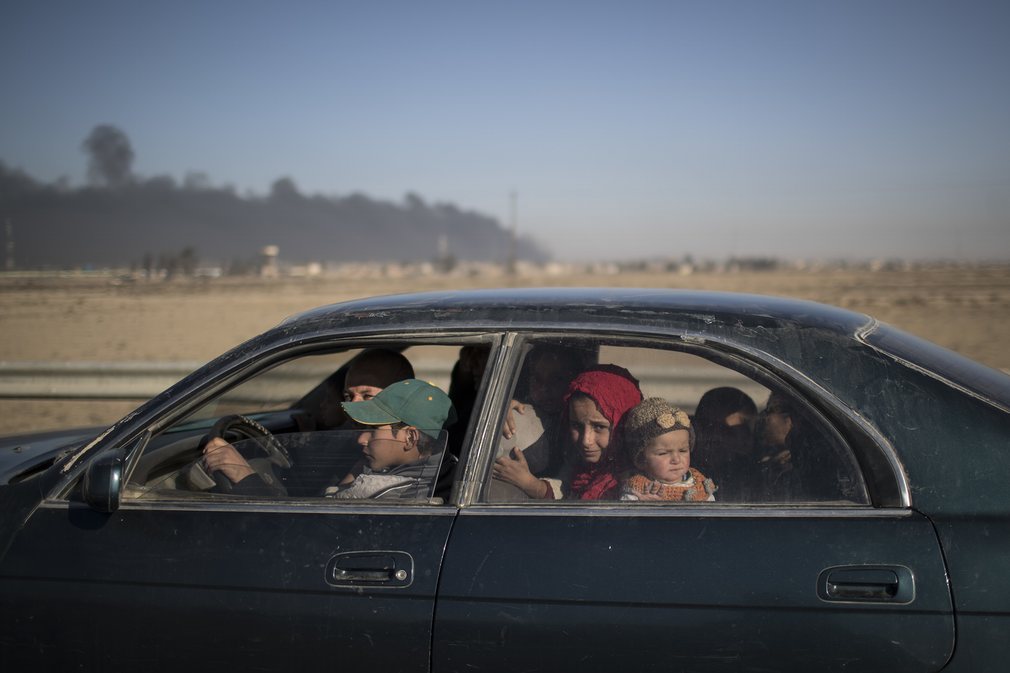
Inside #Qayara, south of #Mosul - More striking photos by @felipedana: image via Joe English @JoeEEnglish, 23 November 2016

Inside #Qayara, south of #Mosul - More striking photos by @felipedana: image via Joe English @JoeEEnglish, 23 November 2016
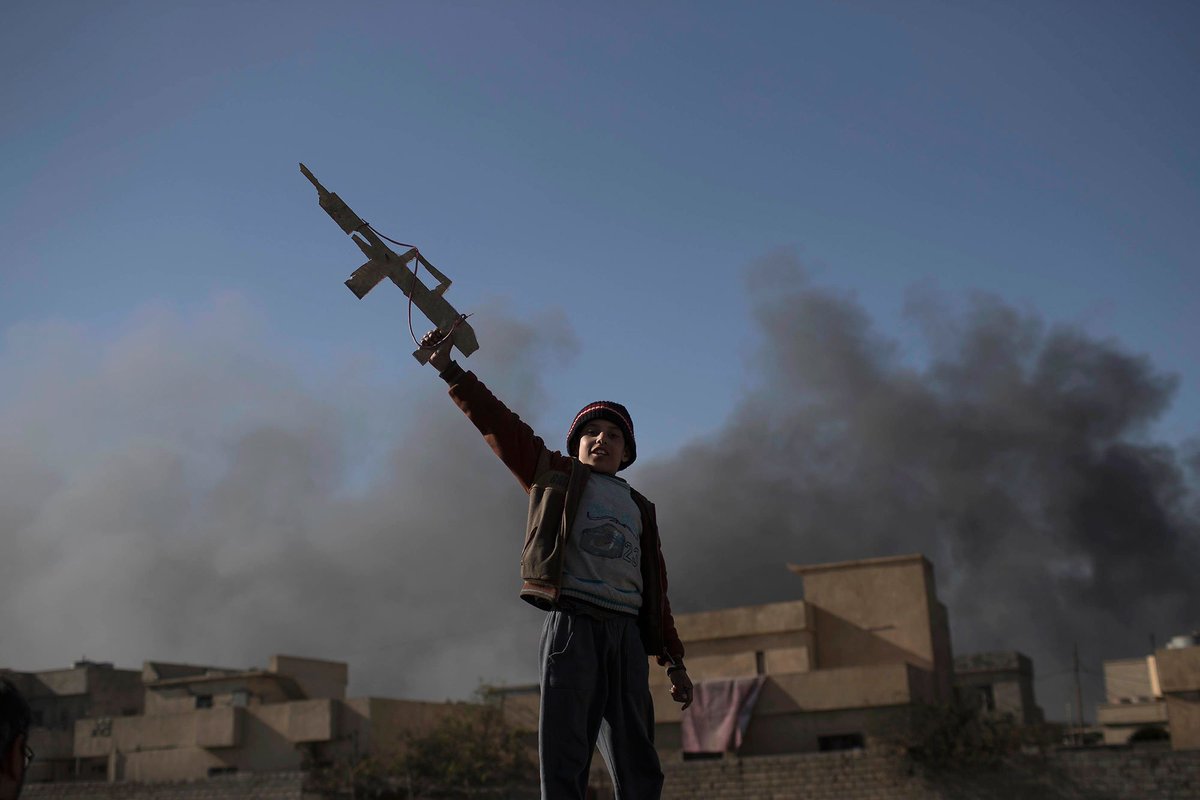
Inside #Qayara, south of #Mosul - by @felipedana: image via Yahoo News Photos @yahoophoto, 22 November 2016
Boys play with a ball in front of oilfields burned by Islamic State fighters in Qayyara, south of Mosul, Iraq: photo by Cathal McNaughton/Reuters, 23 November 2016
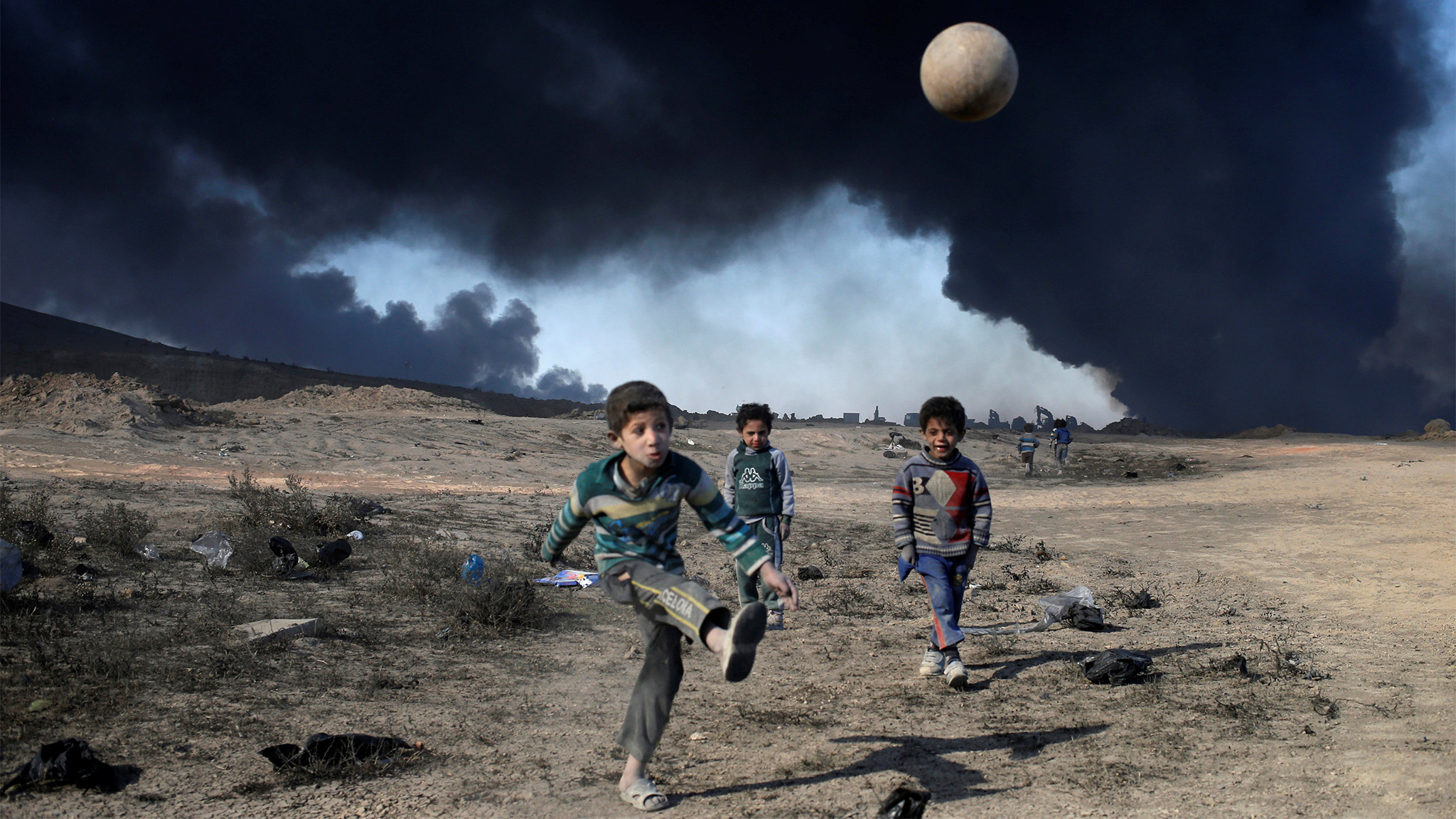
Boys play with a ball in front of oilfields burned by Islamic State fighters in Qayyara, south of Mosul, Iraq: photo by Cathal McNaughton/Reuters, 23 November 2016
Displaced Iraqis, who fled the Islamic State stronghold of Mosul, ask for food supplies in a distribution point at Khazer camp, Iraq: photo by Mohammed Salem/Reuters, 23 November 2016
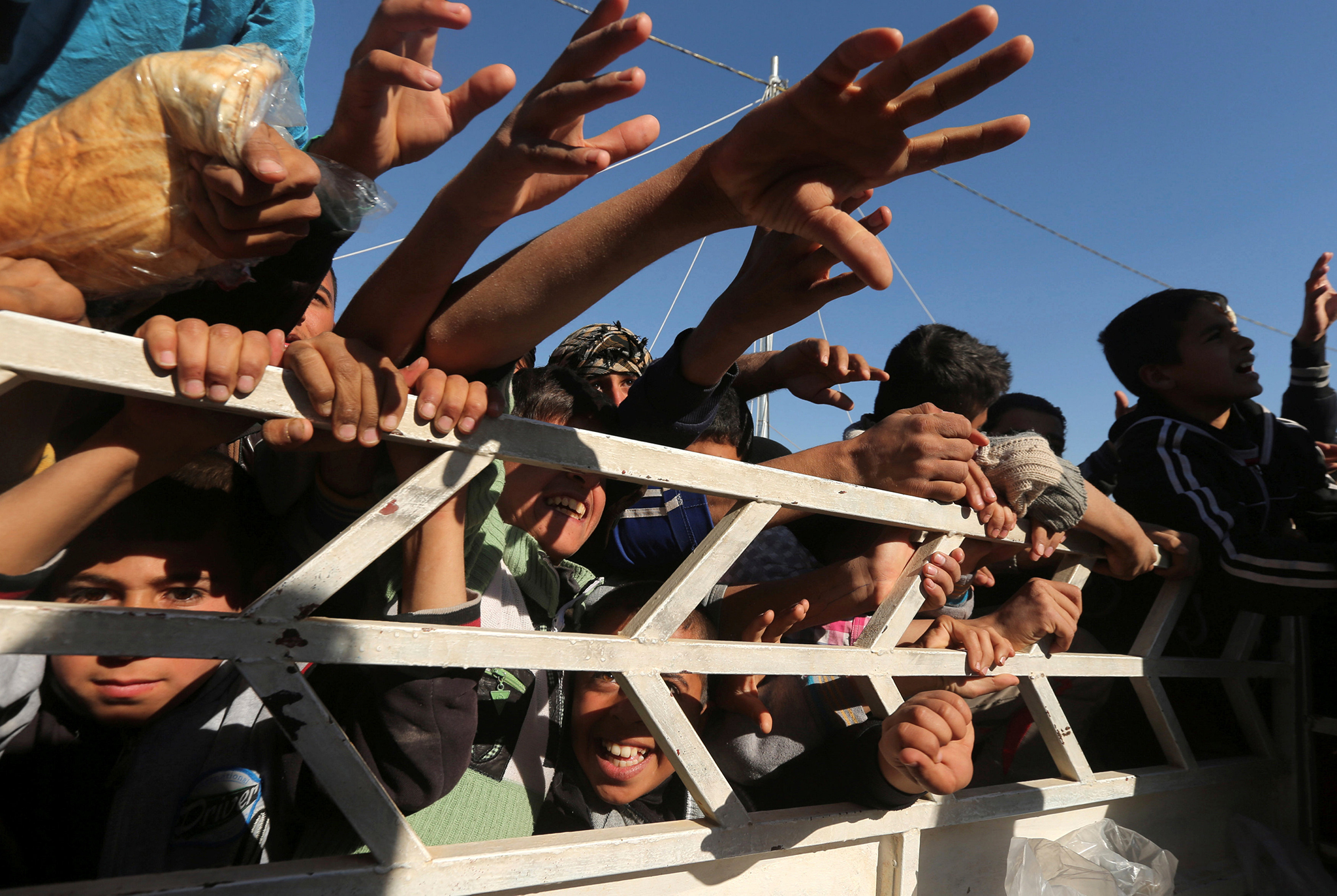
Displaced Iraqis, who fled the Islamic State stronghold of Mosul, ask for food supplies in a distribution point at Khazer camp, Iraq: photo by Mohammed Salem/Reuters, 23 November 2016
A member of the Iraqi Christian forces Kataeb Babylon (Babylon Brigades) stands guard beneath a cross at the Mar Benham Syriac Catholic monastery in the town of Khidr Ilyas, southeast of Mosul, Iraq: photo by Safin Hamed/AFP, 23 November 2016
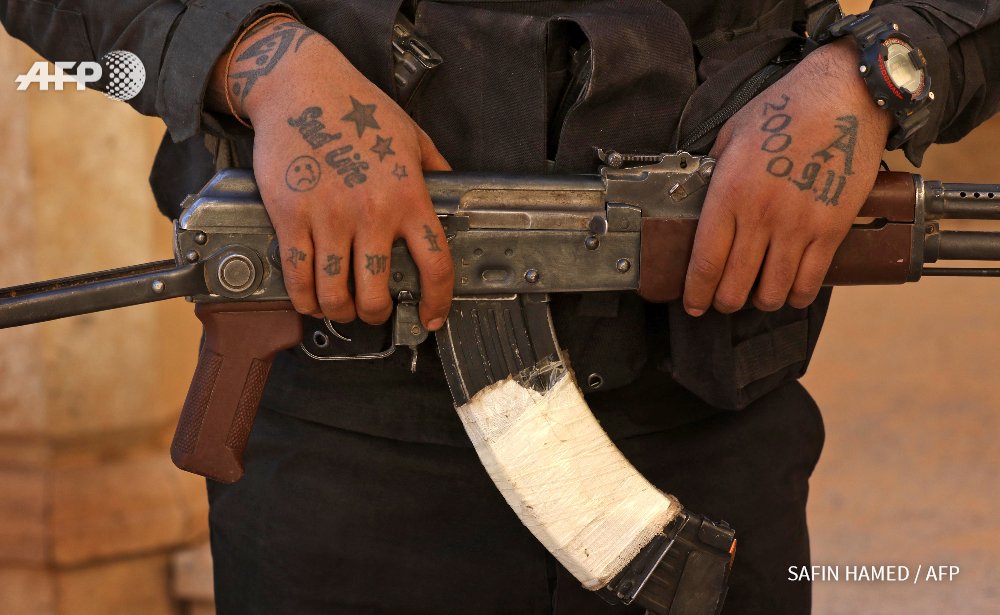
IRAQ - A member of Iraqi Christian forces Kataeb Babylon poses at the Mar Benham Syriac Catholic monastery in Khidr Ilyas. By @safinphoto: image via Frédérique Geffard @fgeffardAFP, 23 November 2016

Nigel Farage, center, leader of the U.K. Independence Party, at Trump Tower in New York: photo by Yana Paskova, 12 November 2016

Nigel Farage, center, leader of the U.K. Independence Party, at Trump Tower in New York: photo by Yana Paskova, 12 November 2016
Buying the whole fucking float
Money, far from being the harmless arena of human emulation as its apologists hold, is a great destroyer. Because money is eminent desire, there is no satisfaction in the external world unless it is conveyed in money, until the world is possessed in monetary garb -- like an Indian bride in her finery, hair reeking of attar of roses, eyes stinging with kohl -- ; because money is all power and potential, the external world is a poor thing and may be exploited and altered without compunction.
El mundo es poco. Columbus sucked a thousand years of gold from the Caribbean in two or three, and then extinguished all its human life. The Conquest he not so much inaugurated as carried to the New World now rages all over the globe, including its polar regions. Woods are paved, mountains mined, seas eaten, species annihilated. All the large land and sea animals of the earth, and most of ts birds, are under sentence of extinction. They are being killed not by the rifle, but by a more lethal invention, money. Money is no longer, as Adam Smith thought in an excitable passage, 'a waggon-way through the air' that leaves the earth free for men, but is actually destroying it, in the sense of extirpating its most intimate and precious nature, as the cattle-money of the Masai is destroying the grasslands of East Africa. To say that human beings must accept these losses, and live among their parasites -- learn to love sparrows and magpies and no other birds, hold cockroaches to be the only insects -- in a world of perfect artifice is the final idolatry: that money is our ineluctable destiny, not merely our life, but our death as well. Schopenhauer watched the old men of his age barricade themselves behind money against the siege engines of death. Now all people do that. Humanity itself is transforming into the dragon of the Nibelungen, squatting in a filthy cave amid heaps of dusty treasure. The Ego is satisfied at last, surrounded by annihilating possessions.
James Buchan: from Frozen Desire: The Meaning of Money, 1997
[To the gold:]
O thou sweet king-killer, and dear divorce
'Twixt natural son and sire! thou bright defiler
Of Hymen's purest bed! thou valiant Mars!
Thou ever young, fresh, loved and delicate wooer,
Whose blush doth thaw the consecrated snow
That lies on Dian's lap! thou visible god,
That solder'st close impossibilities,
And mak'st them kiss! that speak'st with every tongue,
To every purpose! O thou touch of hearts!
Think, thy slave man rebels, and by thy virtue
Set them into confounding odds, that beasts
May have the world in empire!
Money, far from being the harmless arena of human emulation as its apologists hold, is a great destroyer. Because money is eminent desire, there is no satisfaction in the external world unless it is conveyed in money, until the world is possessed in monetary garb -- like an Indian bride in her finery, hair reeking of attar of roses, eyes stinging with kohl -- ; because money is all power and potential, the external world is a poor thing and may be exploited and altered without compunction.
El mundo es poco. Columbus sucked a thousand years of gold from the Caribbean in two or three, and then extinguished all its human life. The Conquest he not so much inaugurated as carried to the New World now rages all over the globe, including its polar regions. Woods are paved, mountains mined, seas eaten, species annihilated. All the large land and sea animals of the earth, and most of ts birds, are under sentence of extinction. They are being killed not by the rifle, but by a more lethal invention, money. Money is no longer, as Adam Smith thought in an excitable passage, 'a waggon-way through the air' that leaves the earth free for men, but is actually destroying it, in the sense of extirpating its most intimate and precious nature, as the cattle-money of the Masai is destroying the grasslands of East Africa. To say that human beings must accept these losses, and live among their parasites -- learn to love sparrows and magpies and no other birds, hold cockroaches to be the only insects -- in a world of perfect artifice is the final idolatry: that money is our ineluctable destiny, not merely our life, but our death as well. Schopenhauer watched the old men of his age barricade themselves behind money against the siege engines of death. Now all people do that. Humanity itself is transforming into the dragon of the Nibelungen, squatting in a filthy cave amid heaps of dusty treasure. The Ego is satisfied at last, surrounded by annihilating possessions.
James Buchan: from Frozen Desire: The Meaning of Money, 1997
[To the gold:]
O thou sweet king-killer, and dear divorce
'Twixt natural son and sire! thou bright defiler
Of Hymen's purest bed! thou valiant Mars!
Thou ever young, fresh, loved and delicate wooer,
Whose blush doth thaw the consecrated snow
That lies on Dian's lap! thou visible god,
That solder'st close impossibilities,
And mak'st them kiss! that speak'st with every tongue,
To every purpose! O thou touch of hearts!
Think, thy slave man rebels, and by thy virtue
Set them into confounding odds, that beasts
May have the world in empire!
William Shakespeare: Timon of Athens, first performed 1607, from Act IV Scene III
Money
Shakespeare paints a brilliant picture of the nature of money.
That which exists for me through the medium of money, that which
I can pay for, i.e., that which money can buy, that am I, the possessor
of money. The stronger the power of my money, the stronger am I. The properties
of money are my, the possessor's, properties and essential powers. Therefore,
what I am and what I can do is by no means determined by my individuality.
I am ugly, but I can buy the most beautiful woman. Which means to say that
I am not ugly, for the effect of ugliness, its repelling power, is destroyed
by money. As an individual, I am lame, but money procures me 24 legs. Consequently,
I am not lame. I am a wicked, dishonest, unscrupulous and stupid individual,
but money is respected, and so also is its owner. Money is the highest
good, and consequently its owner is also good. Moreover, money spares me
the trouble of being dishonest, and I am therefore presumed to be honest.
I am mindless, but if money is the true mind of all things, how can its
owner be mindless? What is more, he can buy clever people for himself,
and is not he who has power over clever people cleverer than them? Through
money, I can have anything the human heart desires. Do I not possess all
human abilities? Does not money therefore transform all my incapacities
into their opposite?
If money is the bond which ties me to human life and society to
me, which links me to nature and to man, is money not the bond of all bonds?
Can it not bind and loose all bonds? Is it therefore not the universal
means of separation? It is the true agent of separation and the true cementing
agent, it is the chemical power of society.
Shakespeare brings out two properties of money in particular:
(1) It is the visible divinity, the transformation of all
human and natural qualities into their opposites, the universal confusion
and inversion of things; it brings together impossibilities.
(2) It is the universal whore, the universal pimp of men
and peoples.
The inversion and confusion of all human and natural qualities,
the bringing together of impossibilities, the divine power of money lies
in its nature as the estranged and alienating species-essence of man which
alienates itself by selling itself. It is the alienated capacity of mankind.
What I, as a man, do –- i.e., what all my individual powers
cannot do –- I can do with the help of money. Money, therefore, transforms
each of these essential powers into something which it is not, into its
opposite.
If I desire a meal, or want to take the mail coach because I am
not strong enough to make the journey on foot, money can provide me both
the meal and the mail coach -- i.e., it transfers my wishes from
the realm of imagination, it translates them from their existence as thought,
imagination, and desires, into their sensuous, real existence, from imagination
into life, and from imagined being into real being. In this mediating role,
money is the truly creative power.
Demand also exists for those who have no money, but their demand is simply a figment of the imagination. For me, or for any other third party, it has no effect, no existence. For me, it therefore remains unreal and without an object. The difference between effective demand based on money and ineffective demand based on my need, my passion, my desire, etc., is the difference between being and thinking, between a representation which merely exists within me and one which exists outside me as a real object.
If I have money for travel, I have no need -– i.e., no
real and self-realizing need –- to travel. If I have a vocation to study,
but no money for it, I have no vocation to study -– i.e.,
no real, true vocation. But, if I really do not have any vocation to study,
but have the will and the money, then I have an effective vocation
do to so. Money, which is the external, universal means and power –- derived
not from man as man, and not from human society as society -– to turn imagination
into reality and reality into more imagination, similarly turns real human
and natural powers into purely abstract representations, and therefore
imperfections and phantoms –- truly impotent powers which exist only in
the individual's fantasy -– into real essential powers and abilities. Thus
characterized, money is the universal inversion of individualities, which
it turns into their opposites and to whose qualities it attaches contradictory
qualities.
Money, therefore, appears as an inverting power in relation to the individual and to those social and other bonds which claim to be essences in themselves. It transforms loyalty into treason, love into hate, hate into love, virtue into vice, vice into virtue, servant into master, master into servant, nonsense into reason, and reason into nonsense.
Since money, as the existing and active concept of value, confounds
and exchanges everything, it is the universal confusion and exchange
of all things, an inverted world, the confusion and exchange of all natural
and human qualities.
He who can buy courage is brave, even if he is a coward. Money
is not exchange for a particular quality, a particular thing, or for any
particular one of the essential powers of man, but for the whole objective
world of man and of nature. Seen from the standpoint of the person who
possesses it, money exchanges every quality for every other quality and
object, even if it is contradictory; it is the power which brings together
impossibilities and forces contradictions to embrace.
If we assume man to be man, and his relation to the world to be
a human one, then love can be exchanged only for love, trust for trust,
and so on. If you wish to enjoy art, you must be an artistically educated
person; if you wish to exercise influence on other men, you must be the
sort of person who has a truly stimulating and encouraging effect on others.
Each one of your relations to man -– and to nature –- must be a particular
expression, corresponding to the object of your will, of your real individual
life. If you love unrequitedly –- i.e., if your love as love does
not call forth love in return, if, through the vital expression of yourself
as a loving person, you fail to become a loved person –- then your love
is impotent, it is a misfortune.
Karl Marx: from Money, in Economic and Philosophic Manuscripts of 1844, translated by Gregor Benton, 1974

Items
for sale at the Trump Store at Trump Tower in Manhattan, where meetings
on the transition to power are being held: photo by Todd Heisler/The
New York Times, 23 November 2016

Items for sale at the Trump Store at Trump Tower in Manhattan, where meetings on the transition to power are being held: photo by Todd Heisler/The New York Times, 23 November 2016
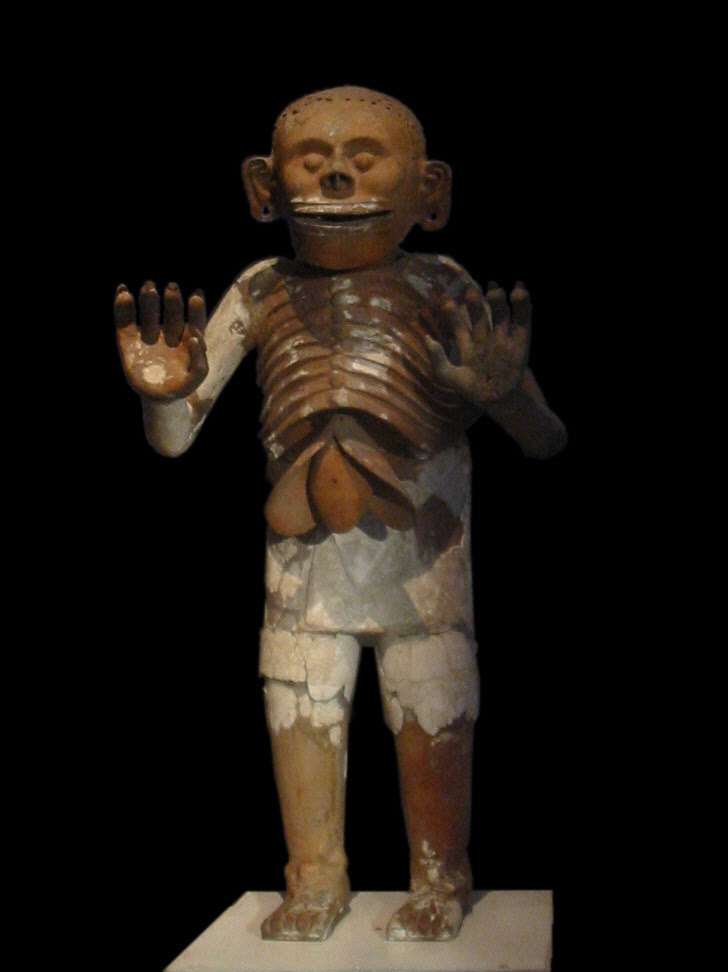
Mictlantecuhtli, god of the dead and king of Mictlan (Chicunauhmictlan), lowest and northernmost section of the underworld: Aztec, sculptor unknown, recovered during excavation of the House of Eagles in the Templo Mayor: photo by Thelmadatter, 23 March 2008 (Museum of the Templo Mayor, Mexico City

For the Love of God: sculpture by Damien Hirst, 2007, platinum cast of a human skull covered with 8,601 diamonds; displayed at White Cube Gallery, London, asking price 50 million pounds: photographer unknown, via Daily Telegraph


Items for sale at the Trump Store at Trump Tower in Manhattan, where meetings on the transition to power are being held: photo by Todd Heisler/The New York Times, 23 November 2016

Mictlantecuhtli, god of the dead and king of Mictlan (Chicunauhmictlan), lowest and northernmost section of the underworld: Aztec, sculptor unknown, recovered during excavation of the House of Eagles in the Templo Mayor: photo by Thelmadatter, 23 March 2008 (Museum of the Templo Mayor, Mexico City
Looking back from the present, it cannot be denied that western
capitalism in the long run created a new art of living, new ways of
thinking: it developed side by side with them. Can one call this a new
civilization? That would I think be putting it too strongly: a
civilization is built up over a longer time scale.
But if change there was, when did it come? ... Werner Sombart locates it in fifteenth-century Florence.
There is no doubt in my mind: on this point Sombart is right... Thirteenth-century -- and a fortiori fourteenth-century Florence was a capitalist city, whatever meaning one attaches to the word. The precocious and abnormal picture it presented struck Sombart, quite understandably... Leon Battista Alberti (1404-1472), architect, sculptor, humanist, was the scion of a long-powerful family with an eventful history: members of the Alberti family had economically colonized England in the fourteenth century; indeed so ubiquitous were they that the English documents often refer to them as the Albertynes -- as if like the Lucchese or indeed the Florentines, they were a nation in themselves. Leon Battista spent many years in exile and with the intention of escaping the troubles of the world entered holy orders. He wrote the first of three Libri della Famiglia in Rome, in about 1433-1434; the fourth was completed in Florence in 1441. Sombart finds in these books a new climate: praise of money, recognition of the value of time, the need to live thriftily -- all good bourgeois principles in the first flush of their youth. And the fact that this cleric came from a long line of merchants respected for their good faith lent weight to his writings. Money is 'the root of all things'; 'with money, one can have a house or a villa, and all the trades and craftsmen will toil like servants for the man who has money. He who has none goes without everything, and money is required for every purpose.' This was a new attitude towards wealth: previously it had been regarded as a kind of obstacle to salvation. The same was true of time: in the past, time had been considered as belonging to God alone; to sell it (in the shape of interest) was to sell non suum, what did not belong to one. But now time was once more becoming a dimension of human life, one of man's possessions which he would do well not to waste. And there was a new approach to luxury: 'Always remember, my sons', writes Alberti, 'that your expenditure should never exceed your income ' -- a new rule which condemned the conspicuous luxury of the nobles. As Sombart says, 'this was introducing a spirit of thrift not into the wretched domestic budgets of humble people who could hardly get enough to eat but into the mansions of the rich'. In other words, the spirit of capitalism.
Fernand Braudel: from The Wheels of Commerce (Les jeux de l'echange), 1979, Volume 2 of Civilization and Capitalism, 15th-18th century (Civilisation materielle, économie et capitalisme); translated from the French by Sîan Reynolds, 1982
But if change there was, when did it come? ... Werner Sombart locates it in fifteenth-century Florence.
There is no doubt in my mind: on this point Sombart is right... Thirteenth-century -- and a fortiori fourteenth-century Florence was a capitalist city, whatever meaning one attaches to the word. The precocious and abnormal picture it presented struck Sombart, quite understandably... Leon Battista Alberti (1404-1472), architect, sculptor, humanist, was the scion of a long-powerful family with an eventful history: members of the Alberti family had economically colonized England in the fourteenth century; indeed so ubiquitous were they that the English documents often refer to them as the Albertynes -- as if like the Lucchese or indeed the Florentines, they were a nation in themselves. Leon Battista spent many years in exile and with the intention of escaping the troubles of the world entered holy orders. He wrote the first of three Libri della Famiglia in Rome, in about 1433-1434; the fourth was completed in Florence in 1441. Sombart finds in these books a new climate: praise of money, recognition of the value of time, the need to live thriftily -- all good bourgeois principles in the first flush of their youth. And the fact that this cleric came from a long line of merchants respected for their good faith lent weight to his writings. Money is 'the root of all things'; 'with money, one can have a house or a villa, and all the trades and craftsmen will toil like servants for the man who has money. He who has none goes without everything, and money is required for every purpose.' This was a new attitude towards wealth: previously it had been regarded as a kind of obstacle to salvation. The same was true of time: in the past, time had been considered as belonging to God alone; to sell it (in the shape of interest) was to sell non suum, what did not belong to one. But now time was once more becoming a dimension of human life, one of man's possessions which he would do well not to waste. And there was a new approach to luxury: 'Always remember, my sons', writes Alberti, 'that your expenditure should never exceed your income ' -- a new rule which condemned the conspicuous luxury of the nobles. As Sombart says, 'this was introducing a spirit of thrift not into the wretched domestic budgets of humble people who could hardly get enough to eat but into the mansions of the rich'. In other words, the spirit of capitalism.
Fernand Braudel: from The Wheels of Commerce (Les jeux de l'echange), 1979, Volume 2 of Civilization and Capitalism, 15th-18th century (Civilisation materielle, économie et capitalisme); translated from the French by Sîan Reynolds, 1982

For the Love of God: sculpture by Damien Hirst, 2007, platinum cast of a human skull covered with 8,601 diamonds; displayed at White Cube Gallery, London, asking price 50 million pounds: photographer unknown, via Daily Telegraph
... the desire incarnate in money offered a reward to the imagination,
as between two lovers; and that reward seemed at first to be guaranteed
by rare and beautiful metals, of whose inner nature and capacity men
could only dream. In time, that guarantee was unveiled as only the
projected authority of a community... It was the community that
authorised the wishes expressed in money or frustrated them. To use
money was to submit to the state, and when states disintegrated their
moneys vanished as completely as their laws...
James Buchan: from Frozen Desire: The Meaning of Money, 1993
James Buchan: from Frozen Desire: The Meaning of Money, 1993

Máscara de Xiuhtecuhtli: representation of Xiuhtecuhtli (Lord Turquoise), Central Mexican god of
fire: Mixtec-Aztec, c.
1400-1521, mosaic of turquoise inlay and other materials; photo by Manuel Parada López de Corselas, 2007 (British
Museum, London)

Mictlantecuhtli, god of the dead: Aztec, sculptor unknown; photo by Jamie Dwyer, 19 August 2008 (Museum of the Templo Mayor, Mexico City)

Mictlantecuhtli, god of the dead: Aztec, sculptor unknown; photo by Jamie Dwyer, 19 August 2008 (Museum of the Templo Mayor, Mexico City)

Visitors at Trump Tower watched last week as potential cabinet nominees and others passed through the lobby: photo by Sam Hodgson for The New York Times, 23 November 2016


Visitors at Trump Tower watched last week as potential cabinet nominees and others passed through the lobby: photo by Sam Hodgson for The New York Times, 23 November 2016

Club members and guests wait for President-elect Donald J. Trump on Friday at his golf club in Bedminster, N.J.: photo by Hilary Swift for The New York Times, 18 November 2016
Club members and guests wait for President-elect Donald J. Trump on Friday at his golf club in Bedminster, N.J.: photo by Hilary Swift for The New York Times, 18 November 2016
Travellers walk through terminal 3 at O’Hare International Airport in Chicago. While driving remains the most popular form of transportation Thanksgiving travellers take, AAA expects just under 4 million people to fly to their holiday destinations.: photo by Nam Y. Huh/AP, 23 November 2016
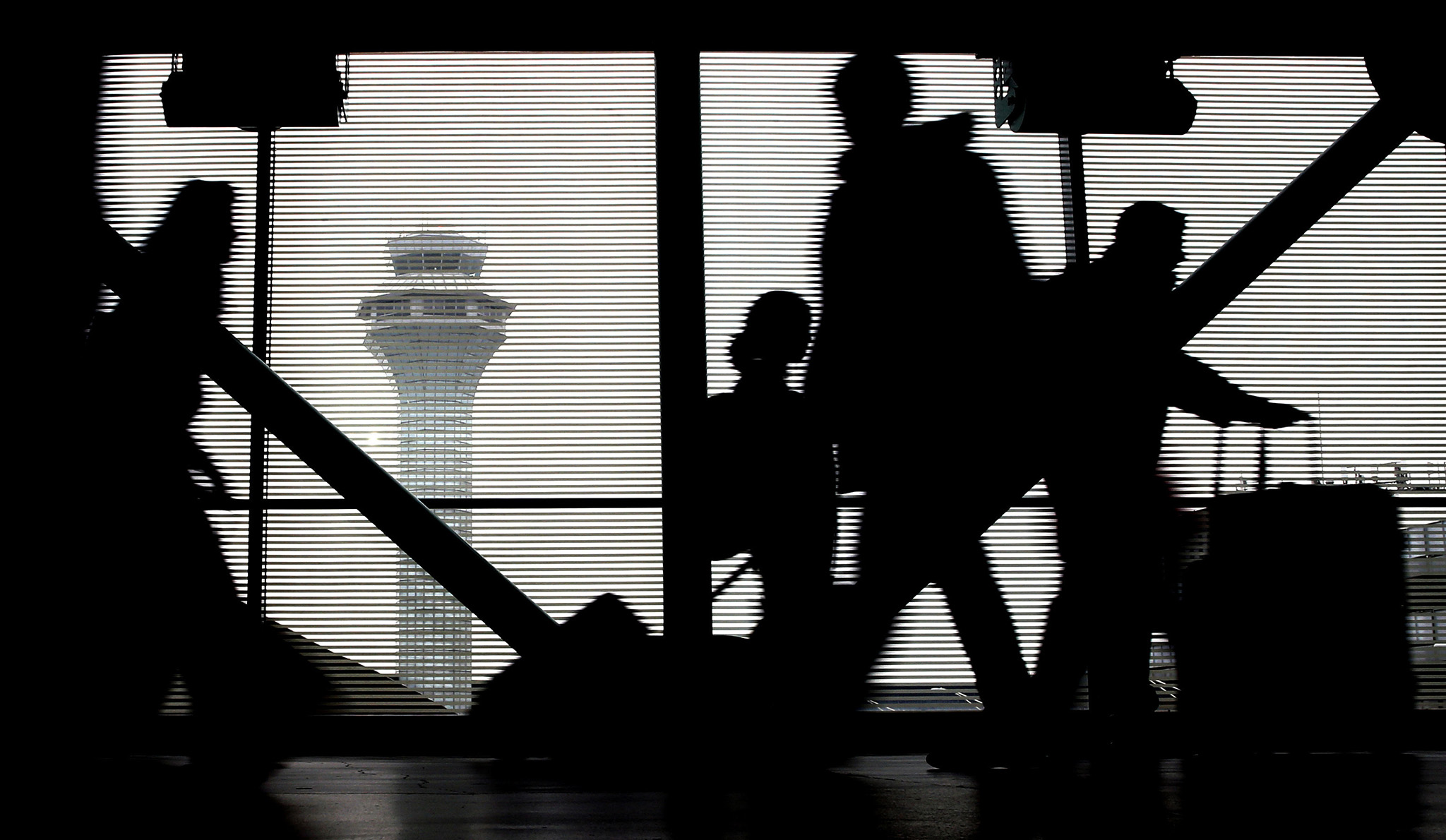
Travellers walk through terminal 3 at O’Hare International Airport in Chicago. While driving remains the most popular form of transportation Thanksgiving travellers take, AAA expects just under 4 million people to fly to their holiday destinations.: photo by Nam Y. Huh/AP, 23 November 2016
A bride looks up from behind her veil during a mass marriage ceremony organised for 22 Muslim couples in Mumbai, India: photo by Rajanish Kakade/AP, 23 November 2016
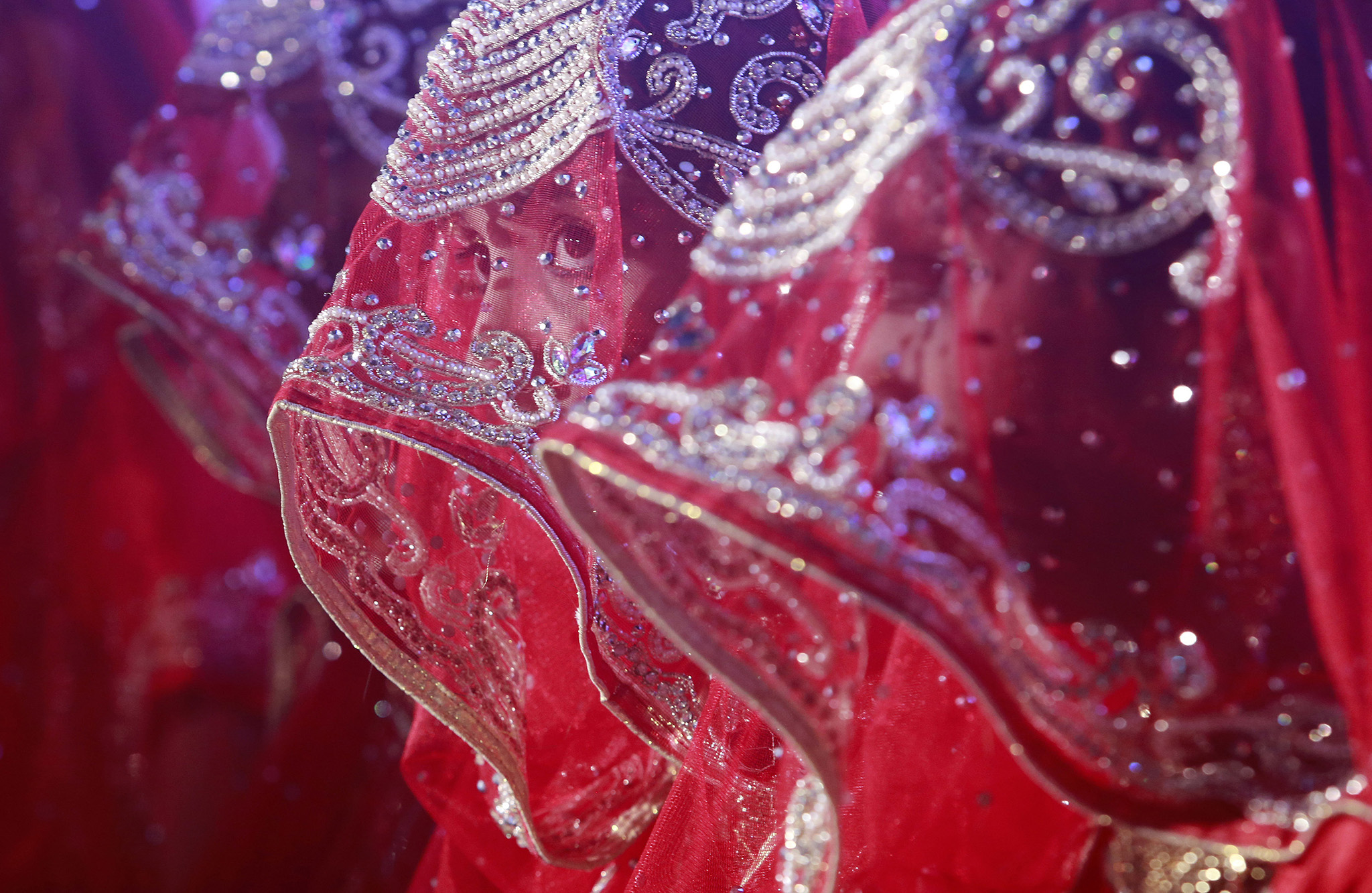
A bride looks up from behind her veil during a mass marriage ceremony organised for 22 Muslim couples in Mumbai, India: photo by Rajanish Kakade/AP, 23 November 2016
German Chancellor Angela Merkel attends a session at the Bundestag in Berlin. Merkel addressed the parliament on key domestic and foreign issues during a week of budget debate: photo by Tobias Schwarz/AFP, 23 November 2016
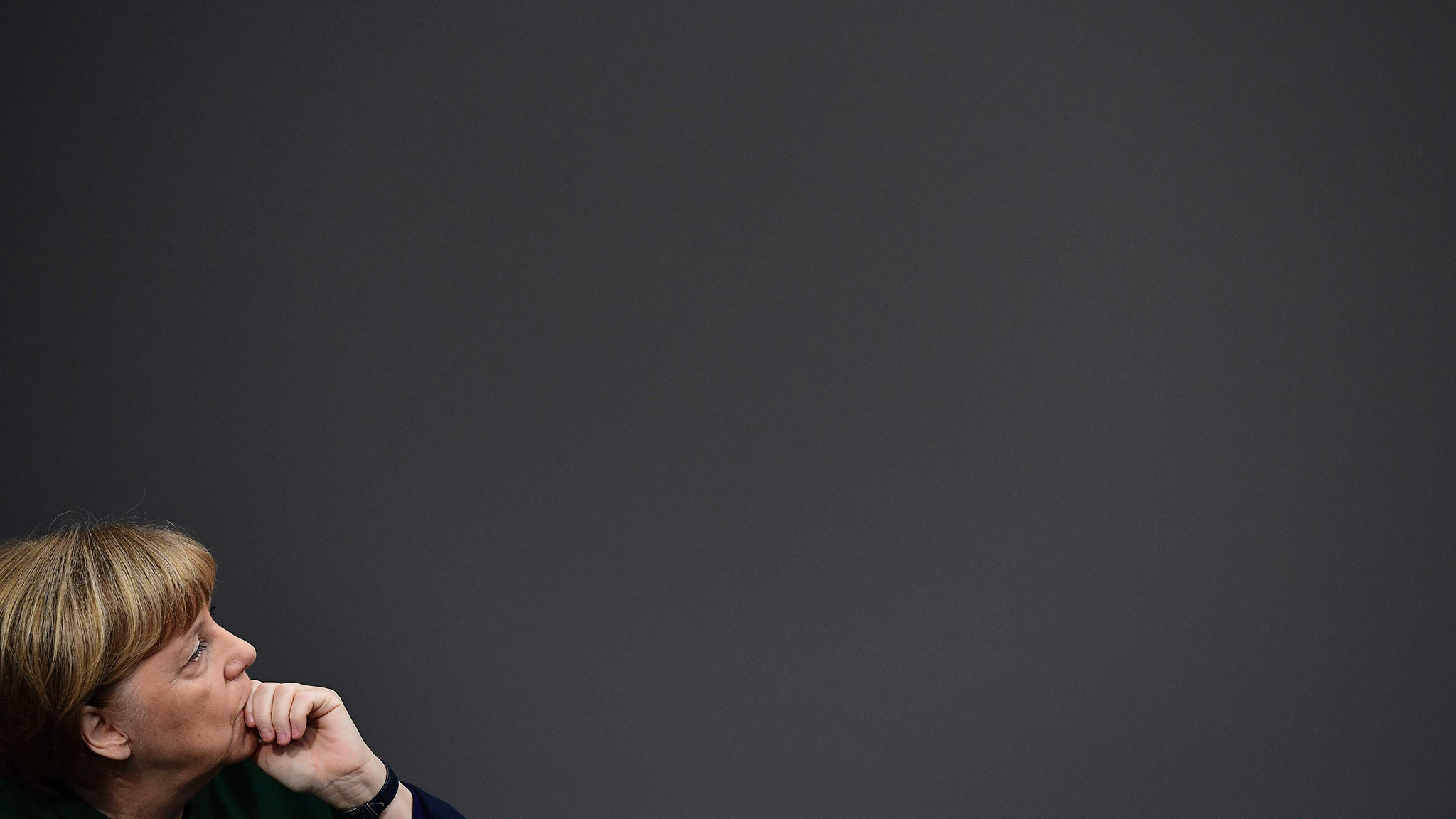
German Chancellor Angela Merkel attends a session at the Bundestag in Berlin. Merkel addressed the parliament on key domestic and foreign issues during a week of budget debate: photo by Tobias Schwarz/AFP, 23 November 2016
Health personnel measures a child as part of a program for malnourished children sponsored by the World Food Program at a Health Center in Mavivi, Beni territory, Eastern D.R.Congo: photo by Eduardo Soteras/AFP, 23 November 2016
![- Health personnel measures a child as part of a program for malnourished children sponsored by the World Food Program at a Health Center in Mavivi, Beni territory, Eastern D.R.Congo, on November 15, 2016. Malnutrition is very common in the country and the problem has been amplified lately in the area by the influx of displaced people fleeing a surge in violence. / AFP PHOTO / Eduardo Soteras / The erroneous mention[s] appearing in the metadata of this photo by Eduardo Soteras has been modified in AFP systems in the following manner: [Mavivi] instead of [Mbau]. Please immediately remove the erroneous mention[s] from all your online services and delete it (them) from your servers. If you have been authorized by AFP to distribute it (them) to third parties, please ensure that the same actions are carried out by them. Failure to promptly comply with these instructions will entail liability on your part for any continued or post notification usage. Therefore we thank you very much for all your attention and prompt action. We are sorry for the inconvenience this notification may cause and remain at your disposal for any further information you may require.EDUARDO SOTERAS/AFP/Getty Images](http://blogs.ft.com/photo-diary/files/2016/11/Congo_AFP1.jpg)
Health personnel measures a child as part of a program for malnourished children sponsored by the World Food Program at a Health Center in Mavivi, Beni territory, Eastern D.R.Congo: photo by Eduardo Soteras/AFP, 23 November 2016
A man cycles down a flooded street with empty cooking oil containers during a rain storm in Dar es Salaam, Tanzania: photo by Daniel Hayduk/AFP, 23 November 2016

A man cycles down a flooded street with empty cooking oil containers during a rain storm in Dar es Salaam, Tanzania: photo by Daniel Hayduk/AFP, 23 November 2016
A woman paints the floor of a pond as her child pulls at her sari in Delhi, India: photo by Cathal McNaughton/Reuters, 23 November 2016
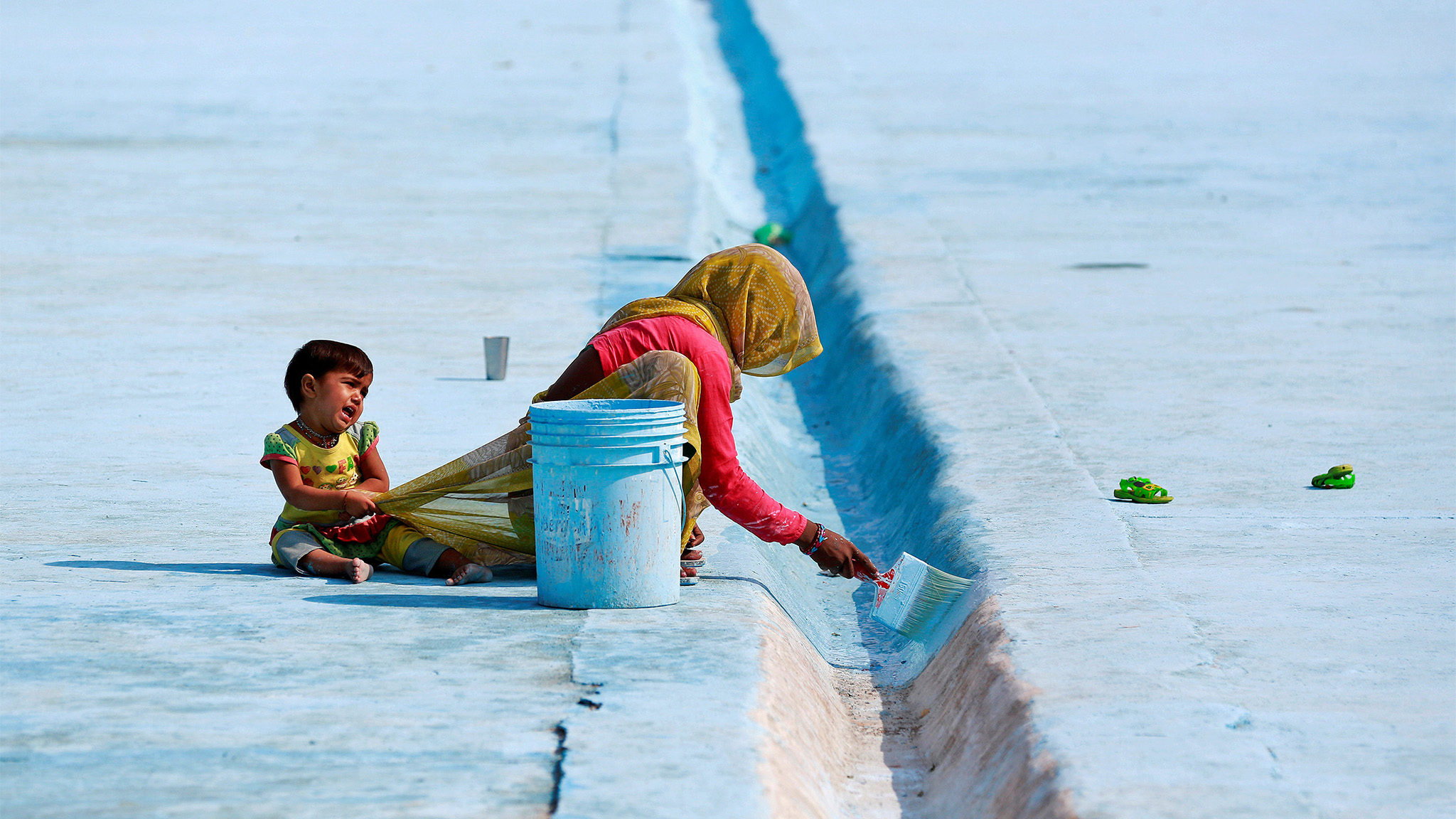
A woman paints the floor of a pond as her child pulls at her sari in Delhi, India: photo by Cathal McNaughton/Reuters, 23 November 2016
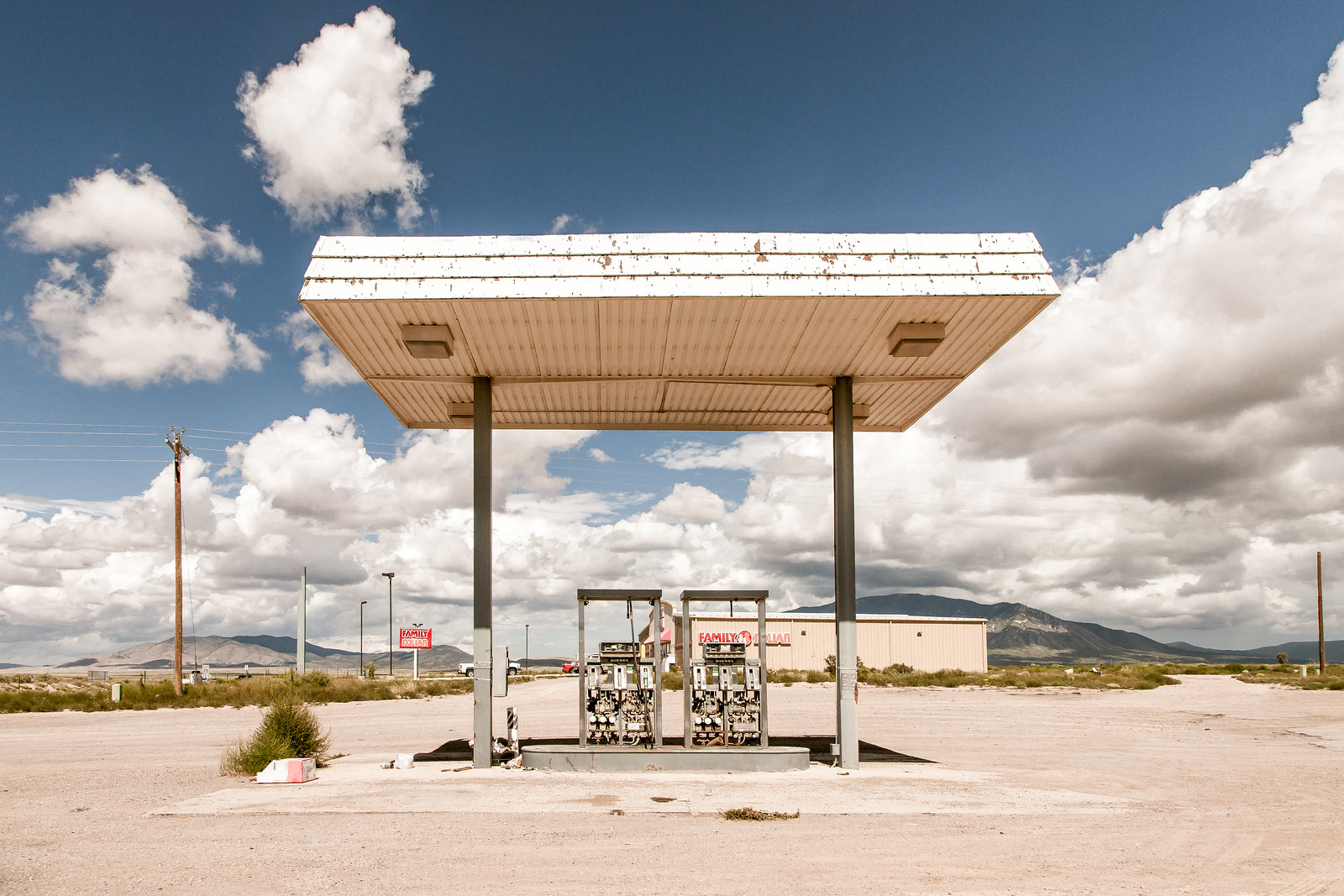
Carrizozo, New Mexico: photo by Jorge Guadalupe Lizárraga, September 2016

Carrizozo, New Mexico: photo by Jorge Guadalupe Lizárraga, September 2016

Carrizozo, New Mexico: photo by Jorge Guadalupe Lizárraga, September 2016

No comments:
Post a Comment